Profit and loss
Business Mathematics F. Y. BCOM
SPPU
Profit and loss FYBCOM semester II
Business Mathematics, FY BCOM, sppu.
FULL exercise Questions and Answers Solved.
Full Solutions
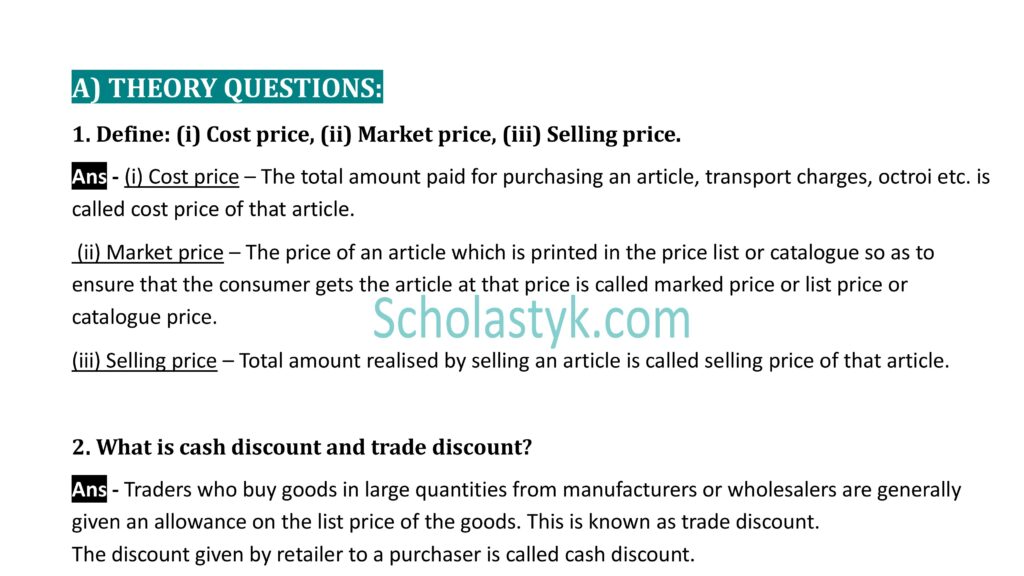
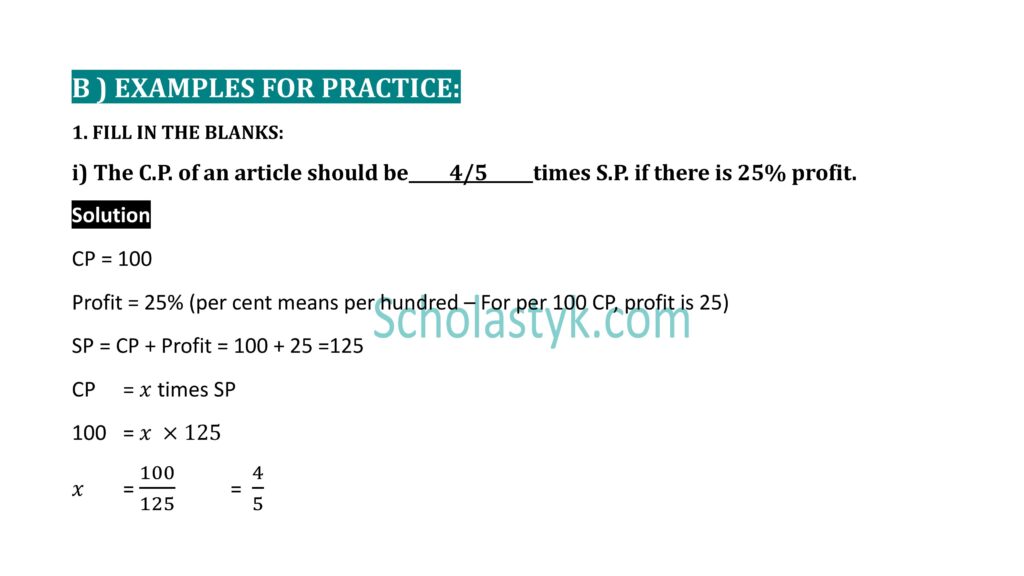
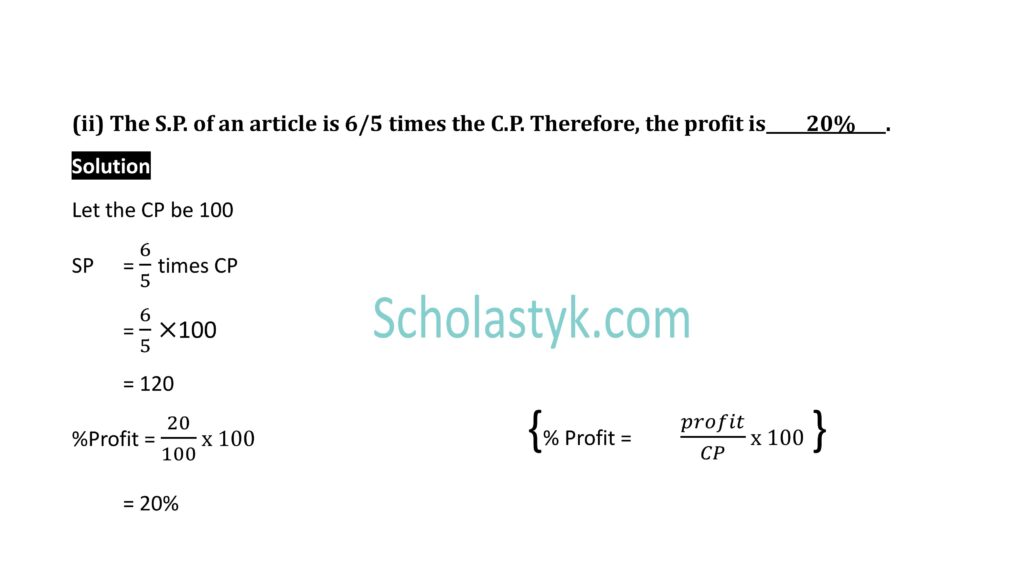

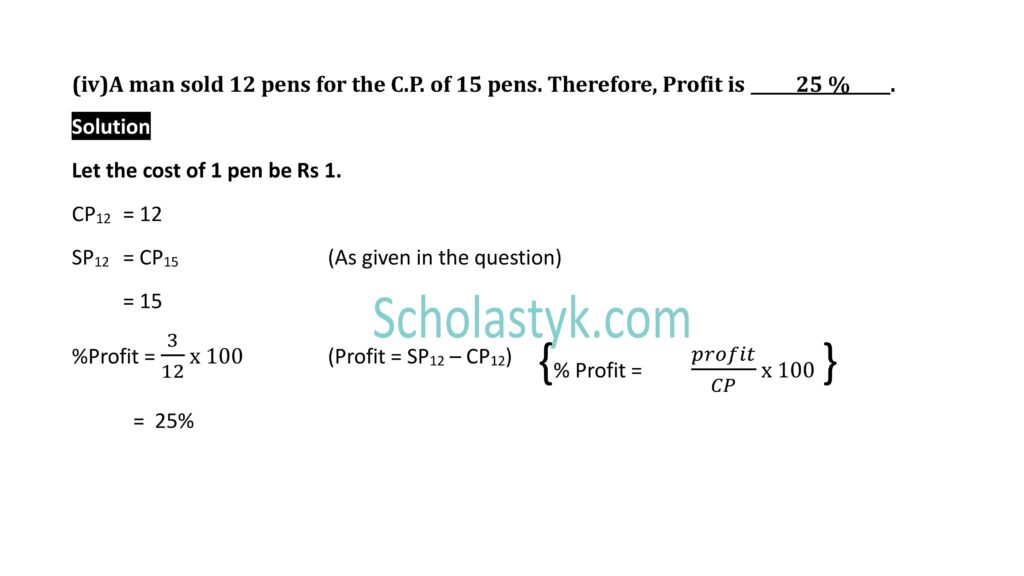
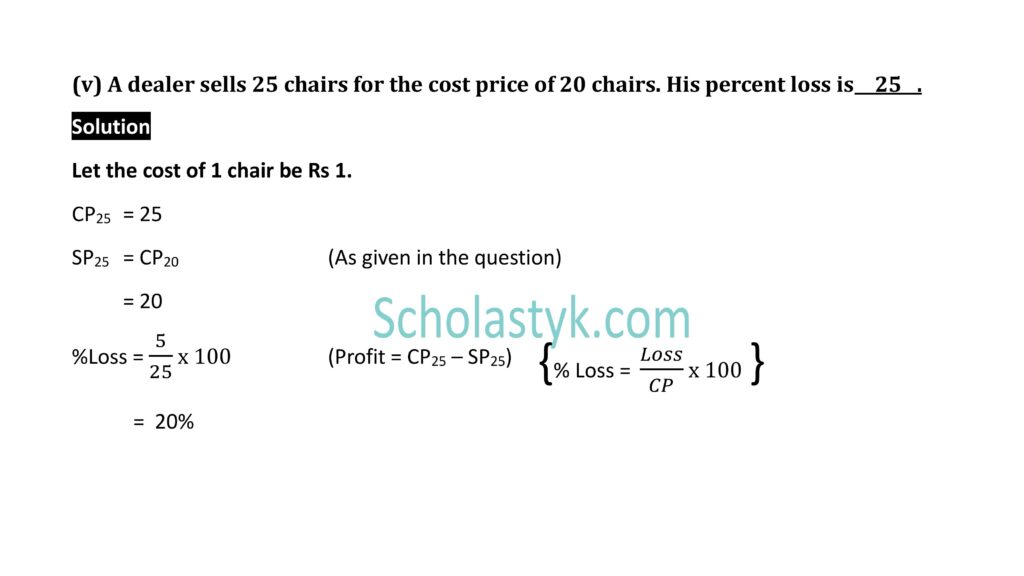
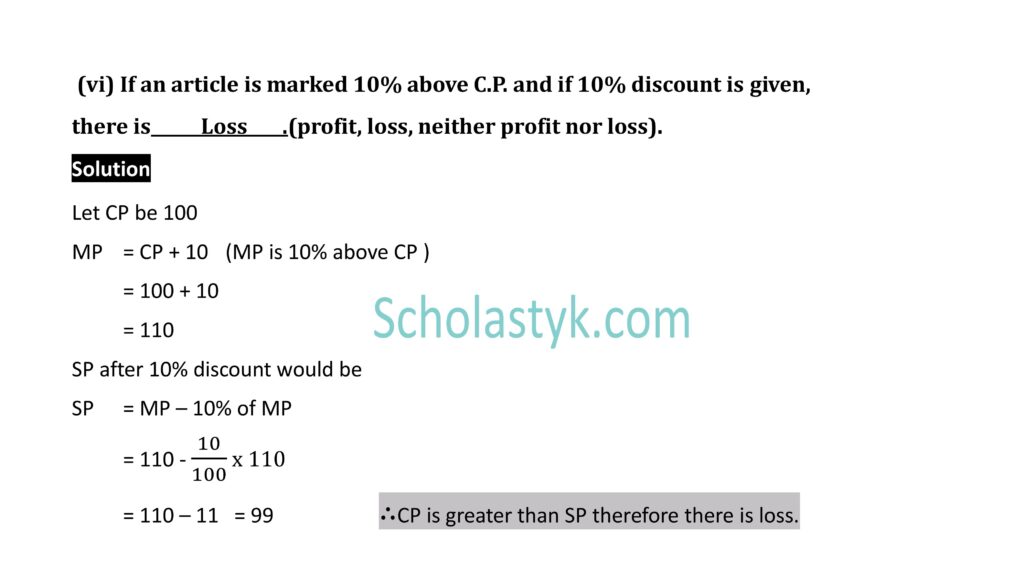
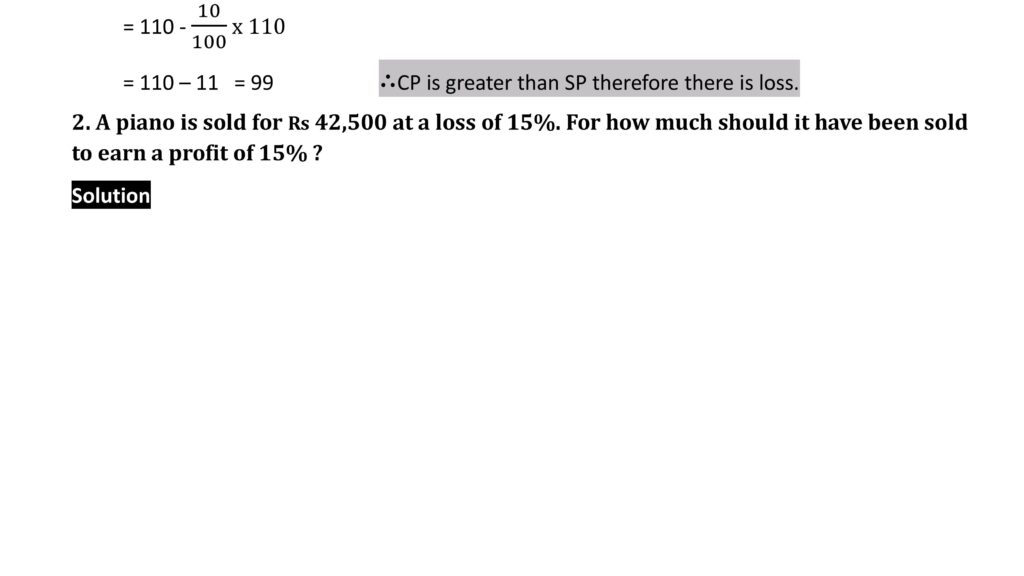
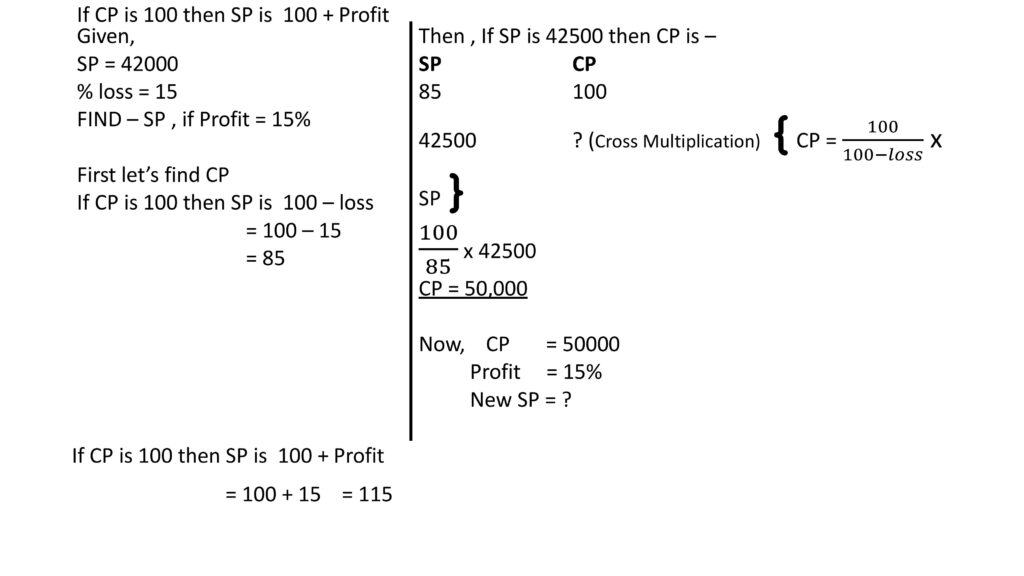
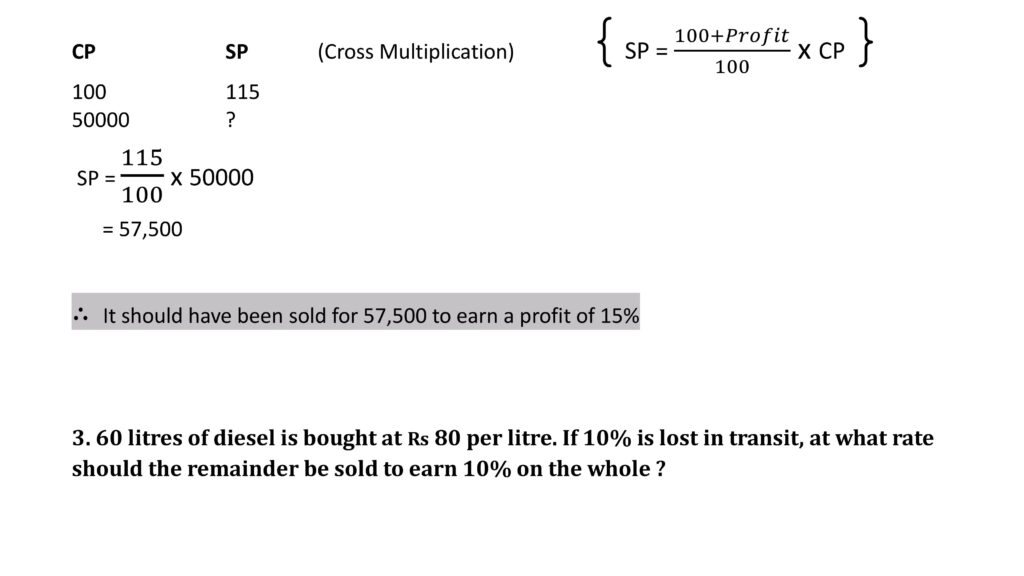
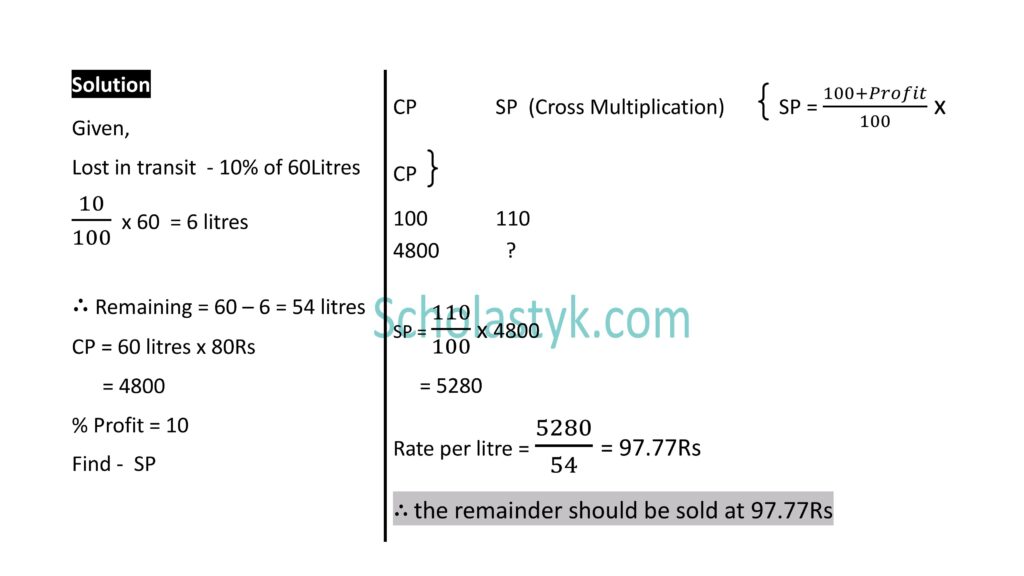
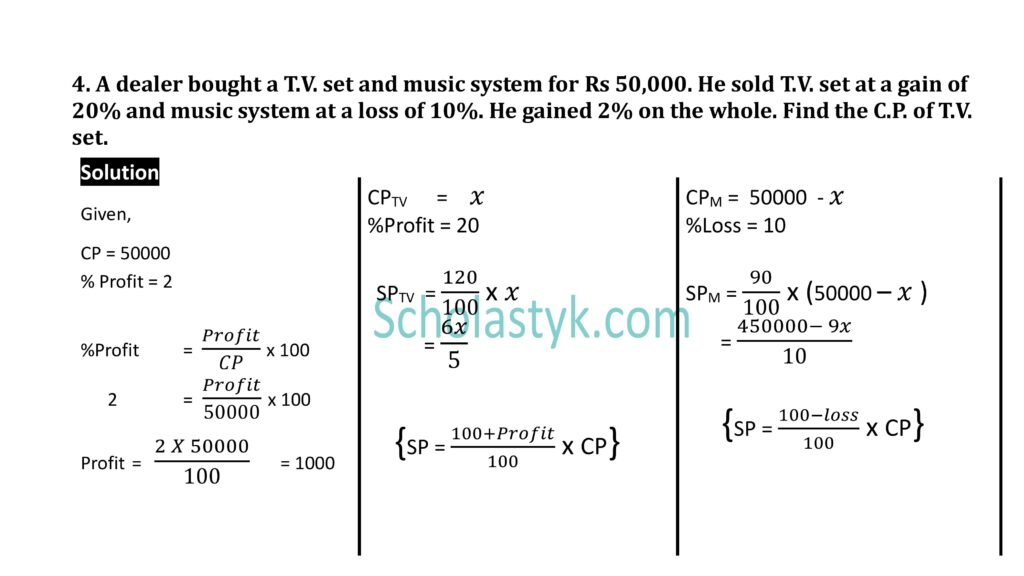
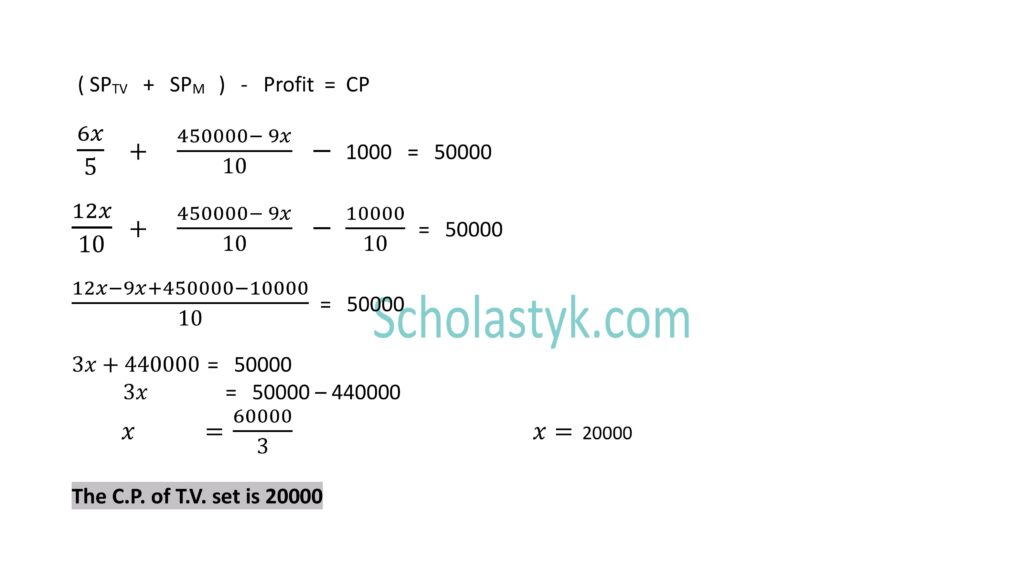
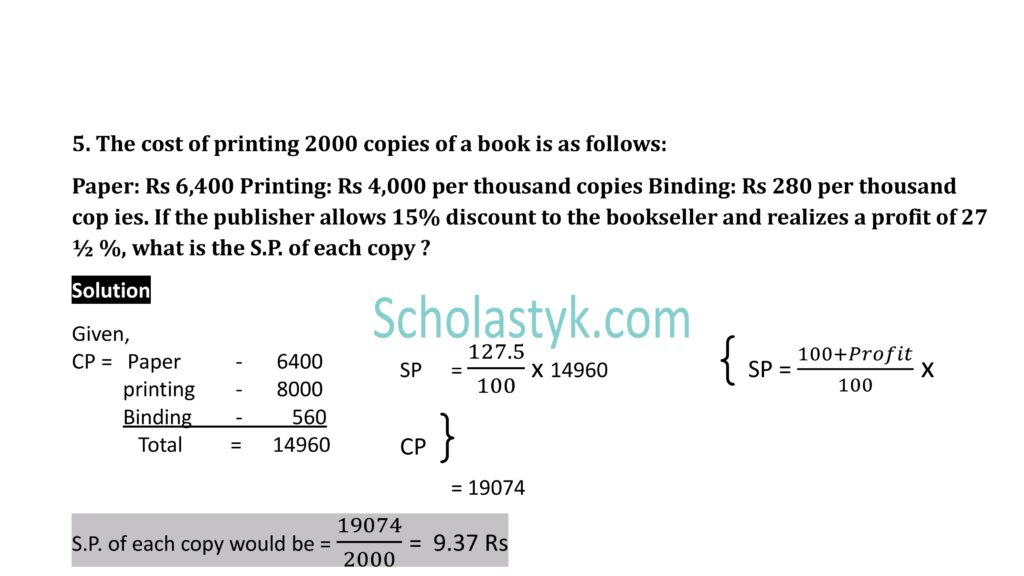
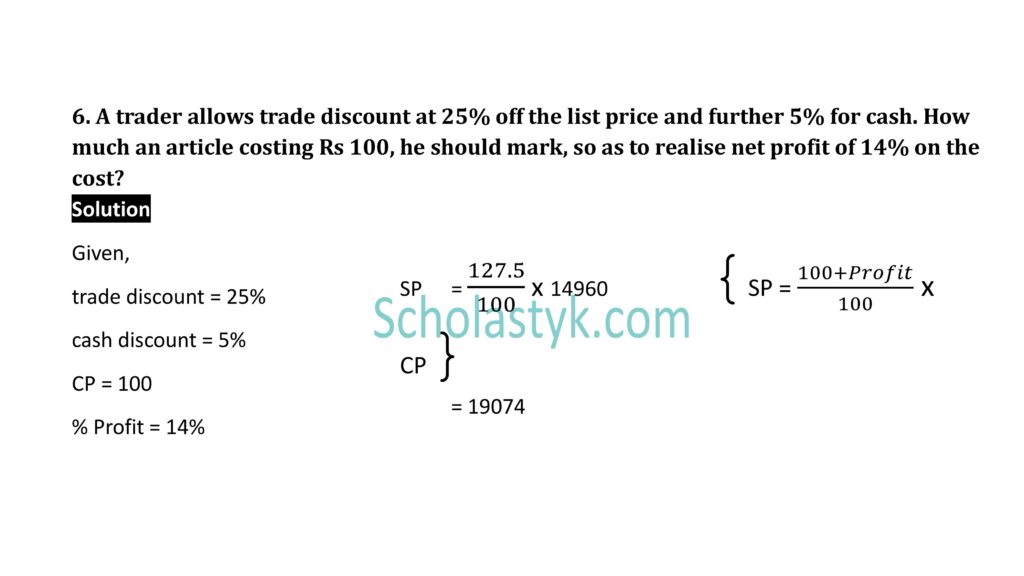
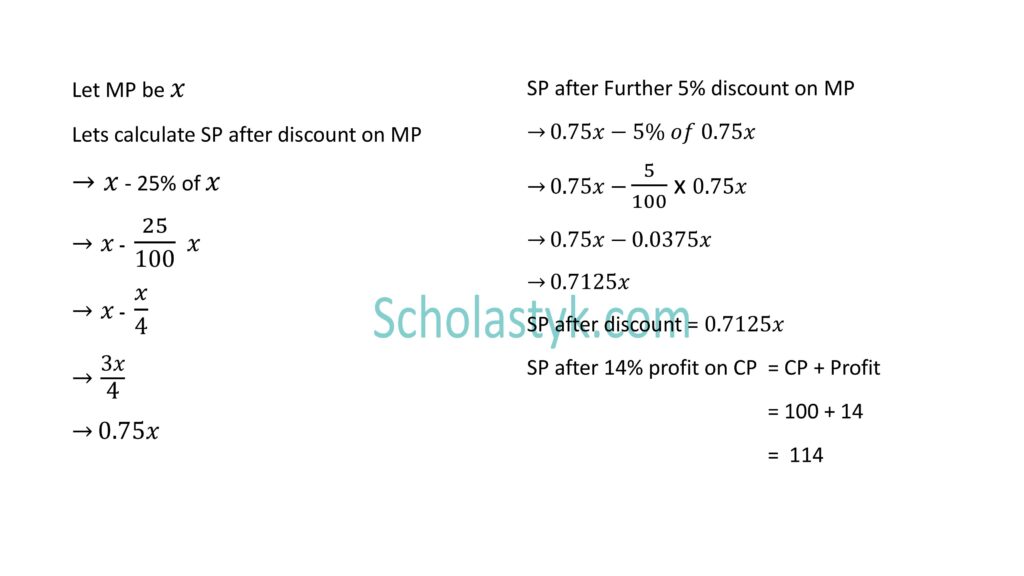
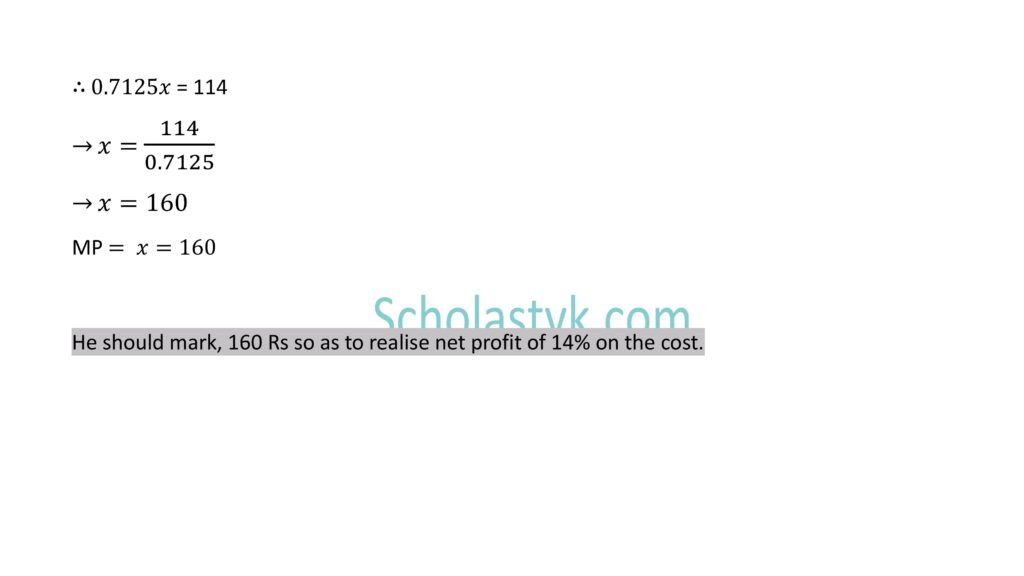
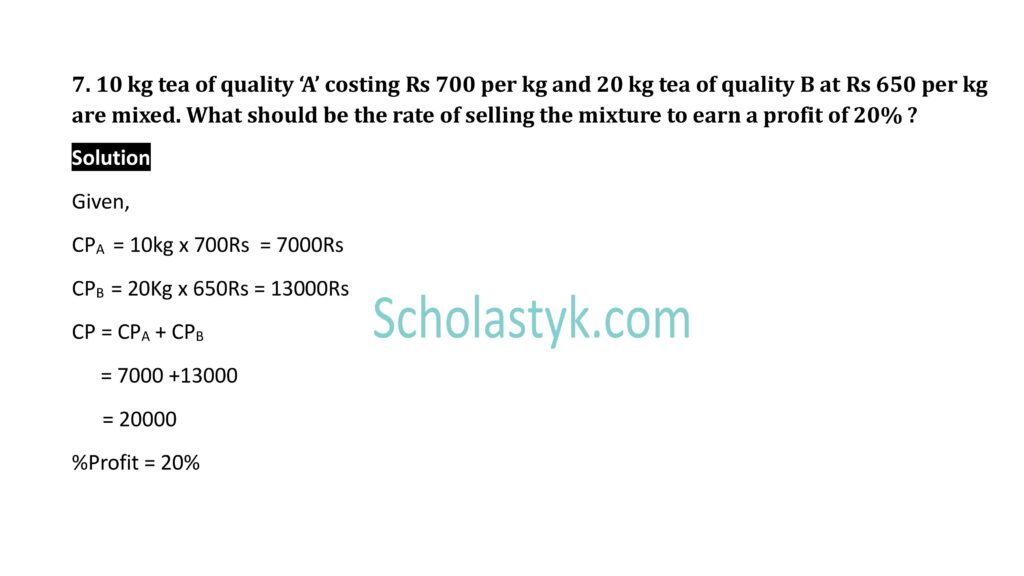
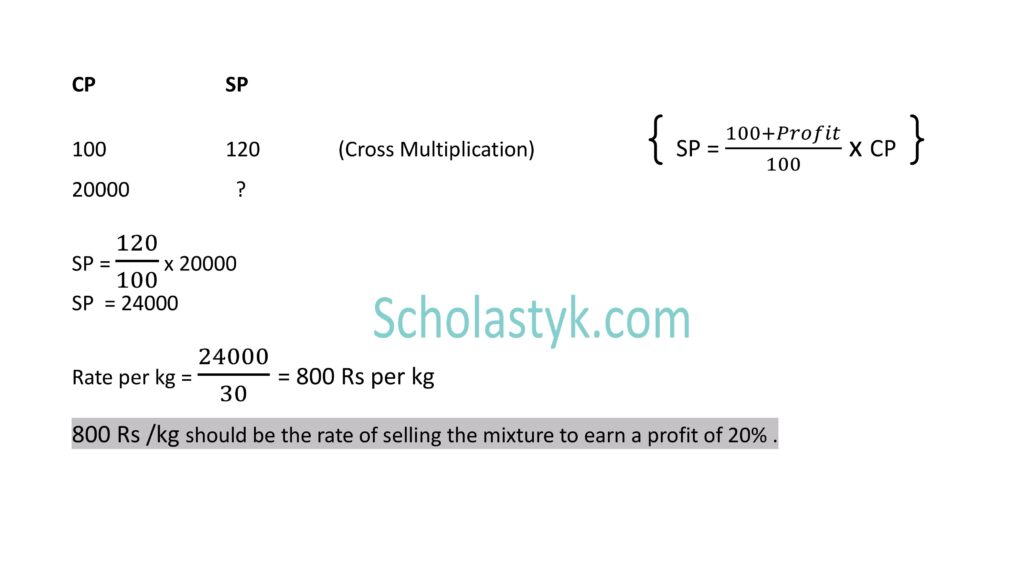
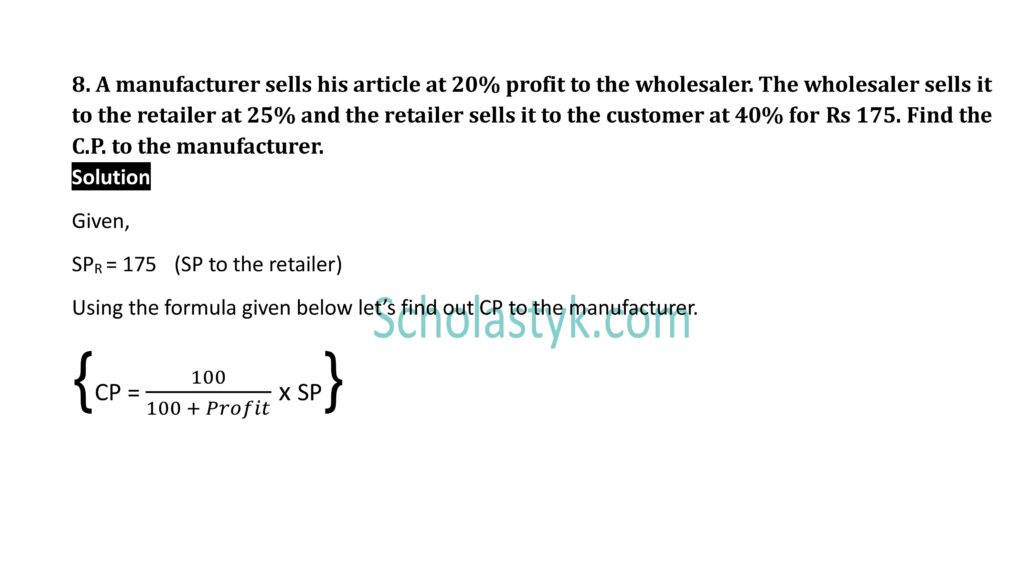
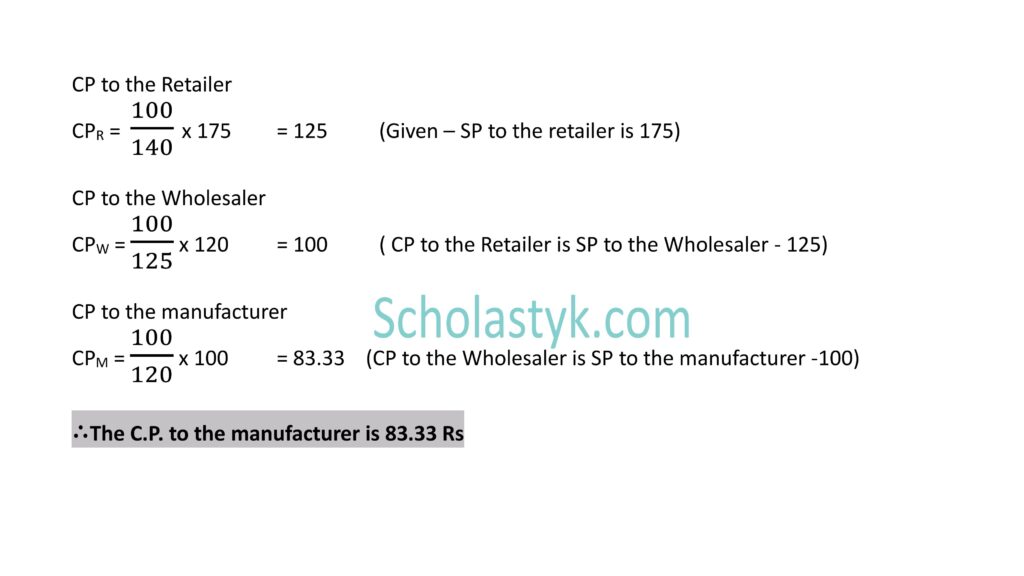
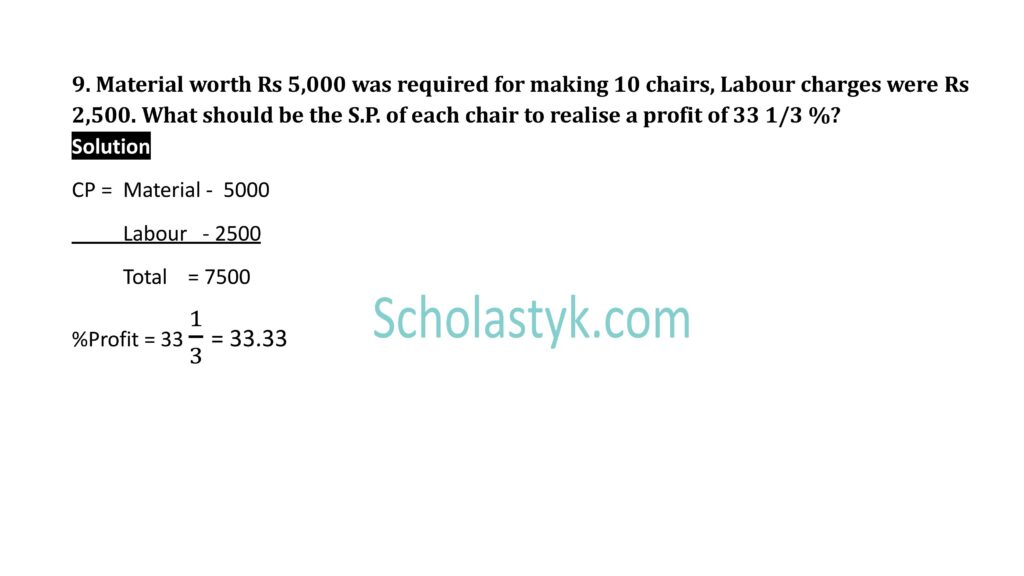
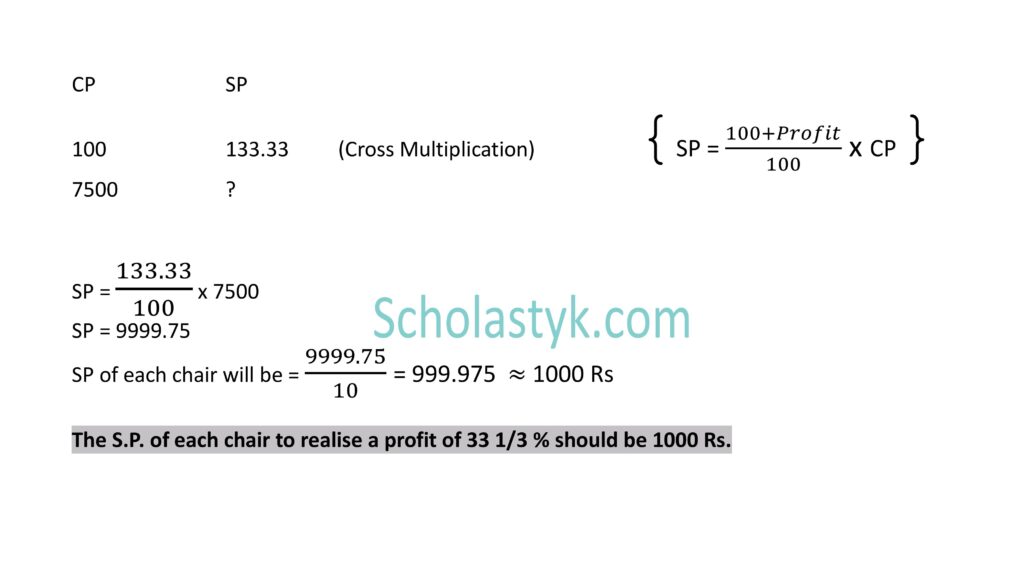
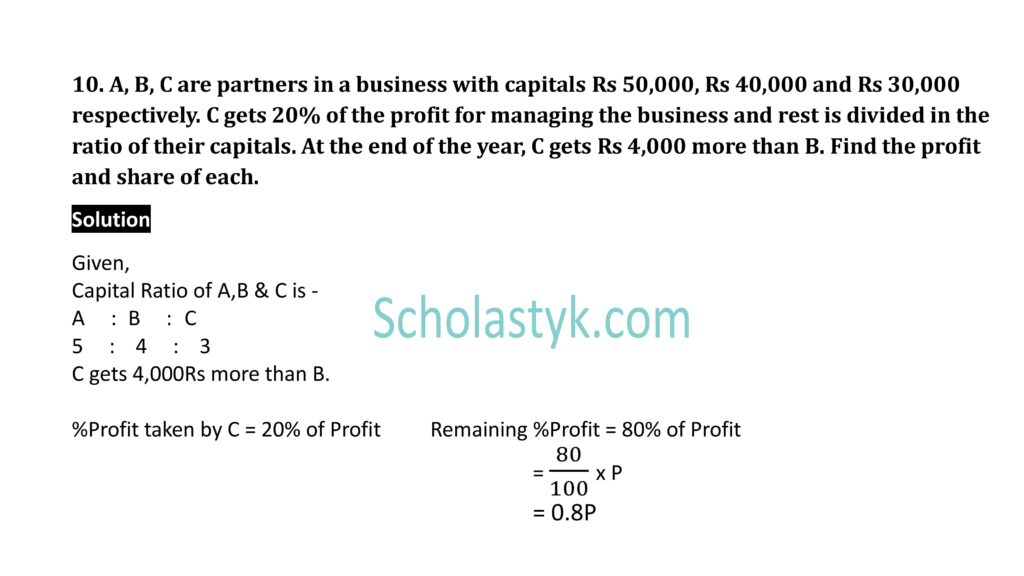
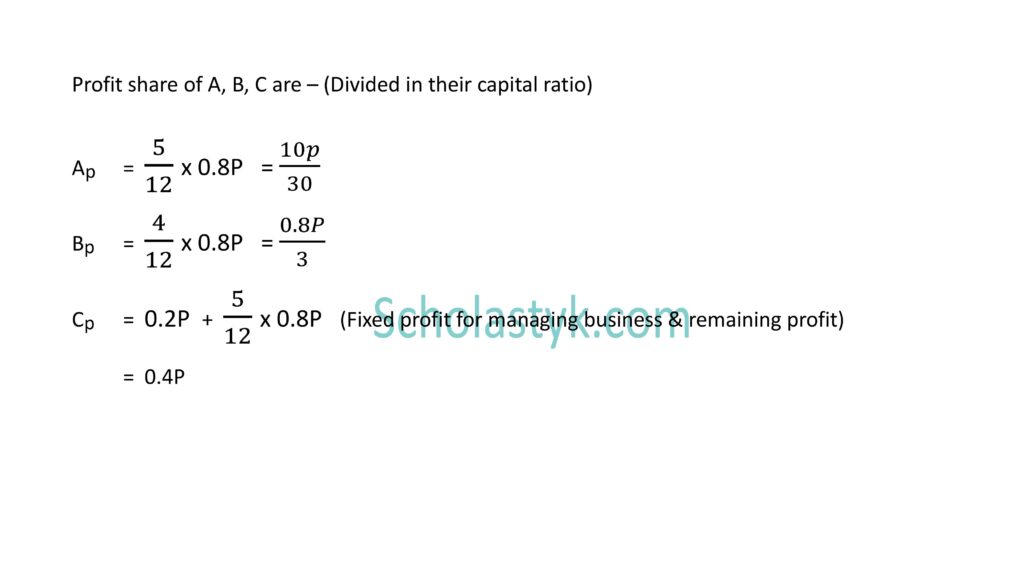
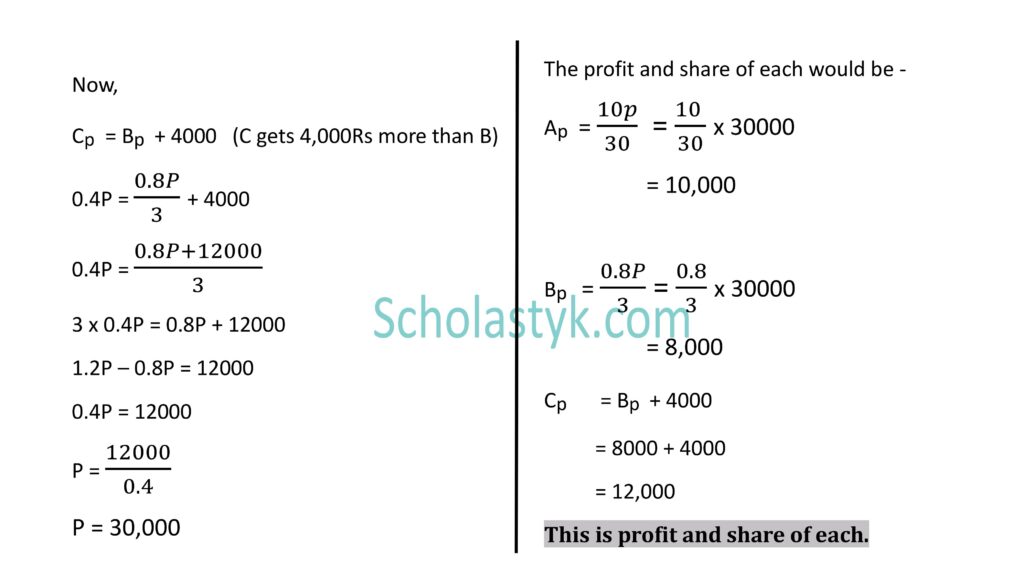
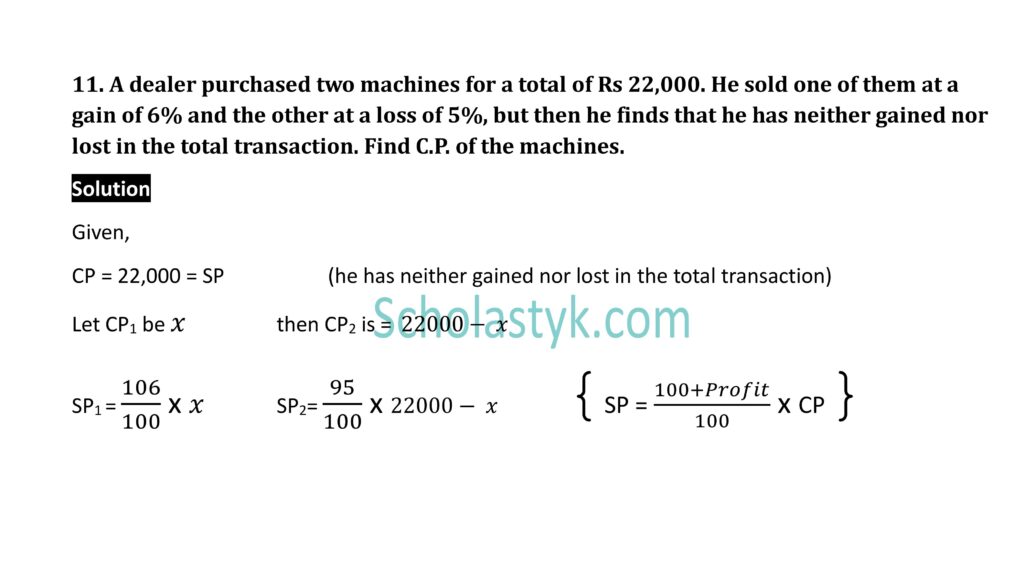
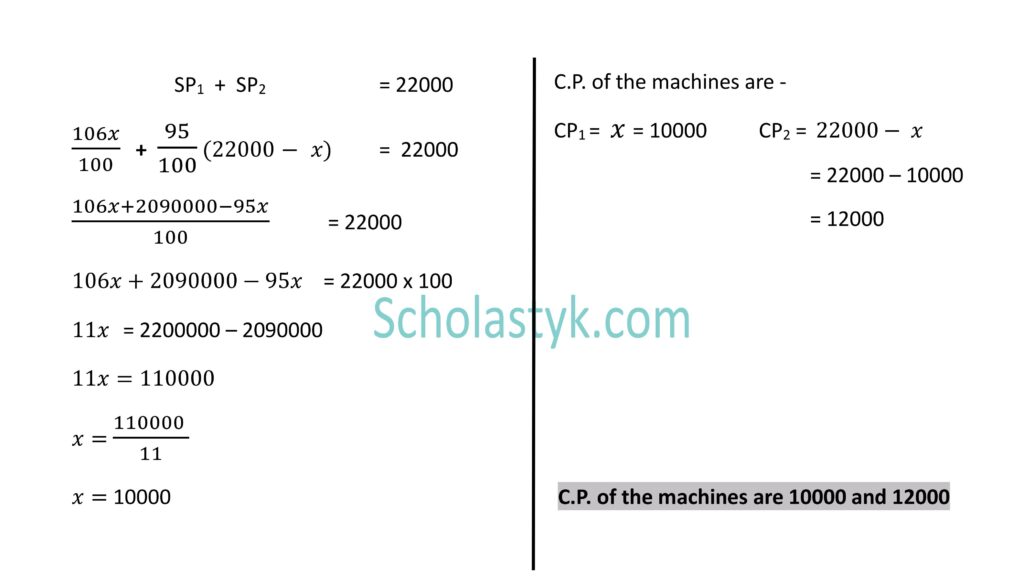
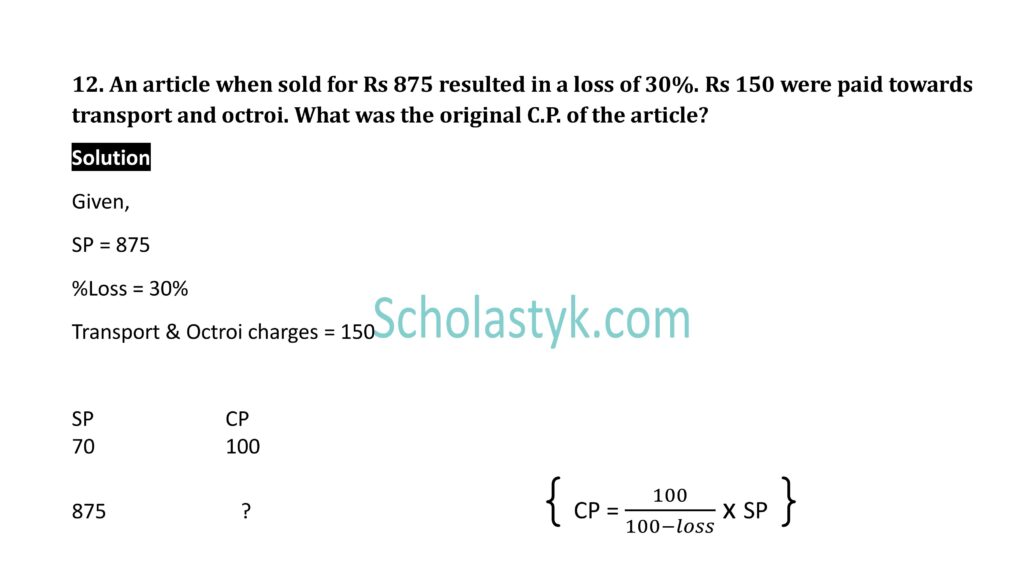
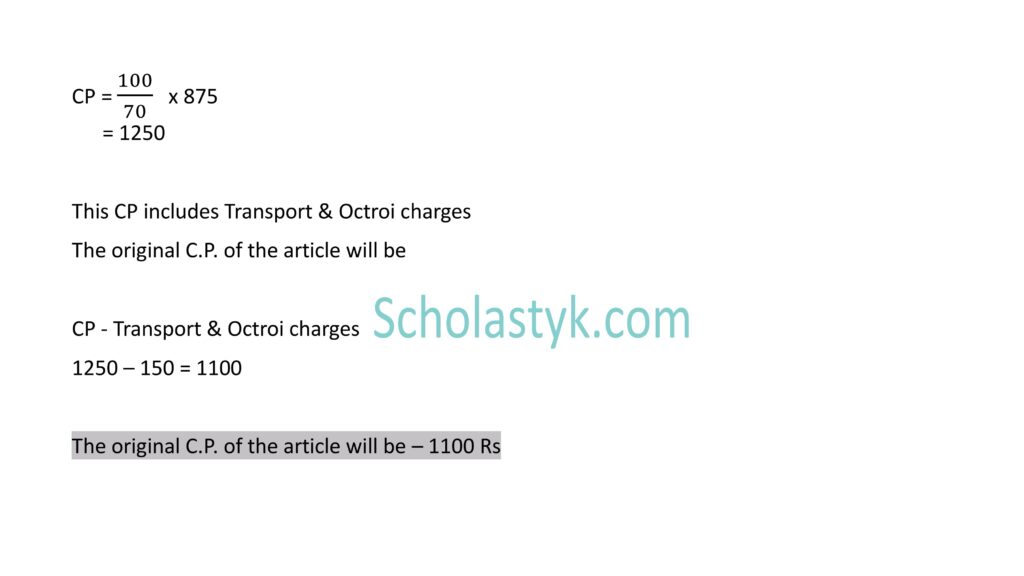
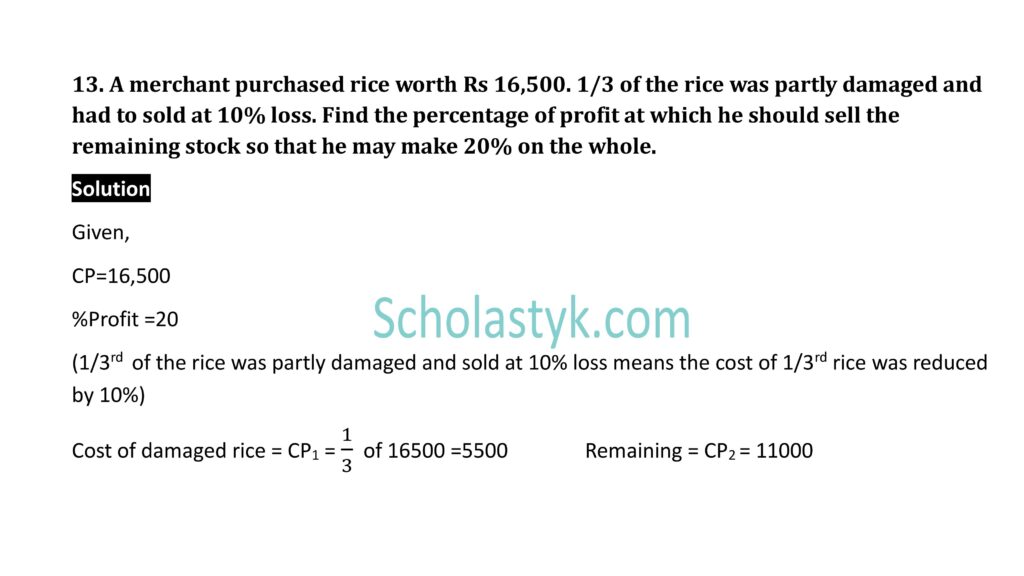
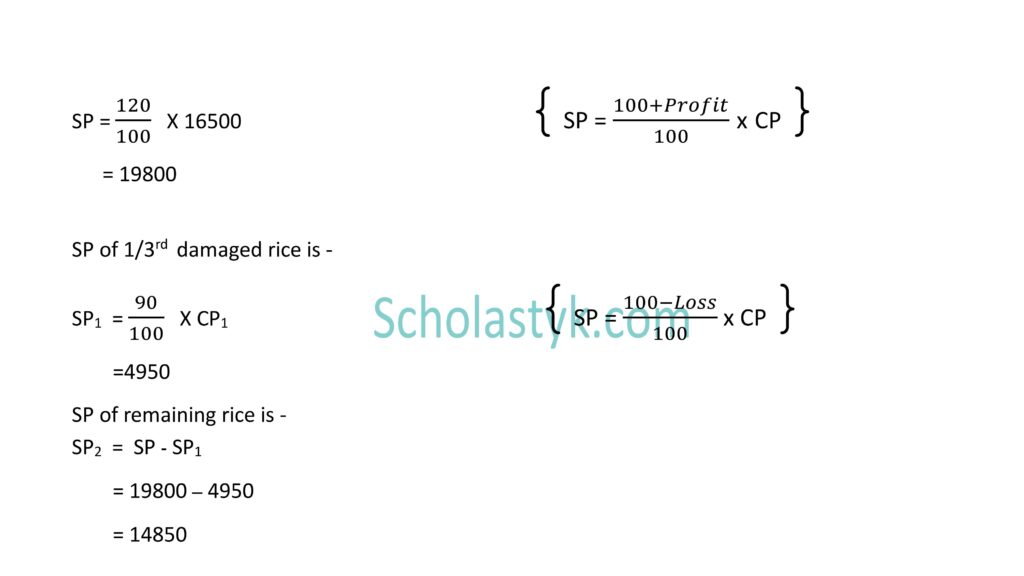
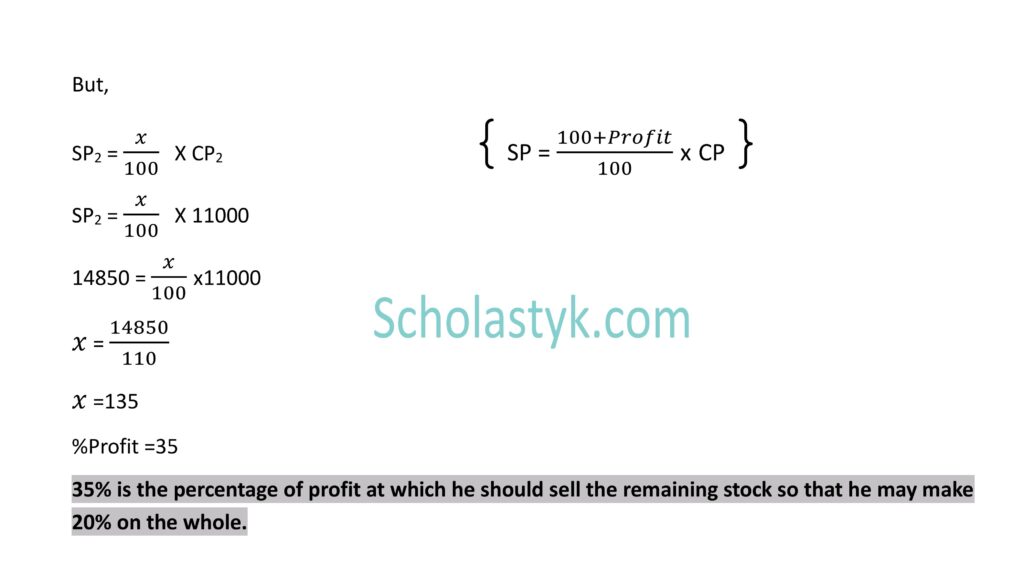
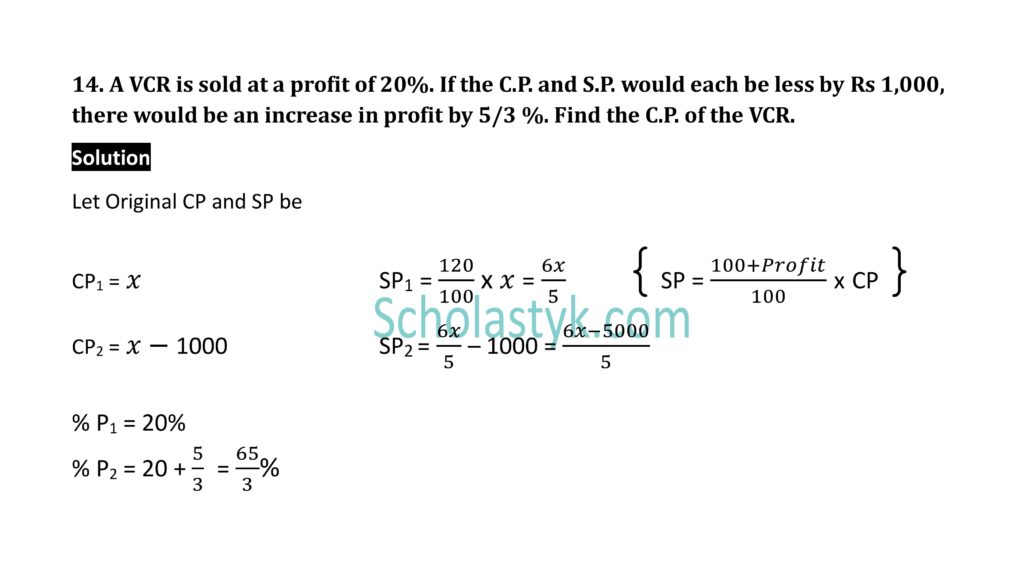
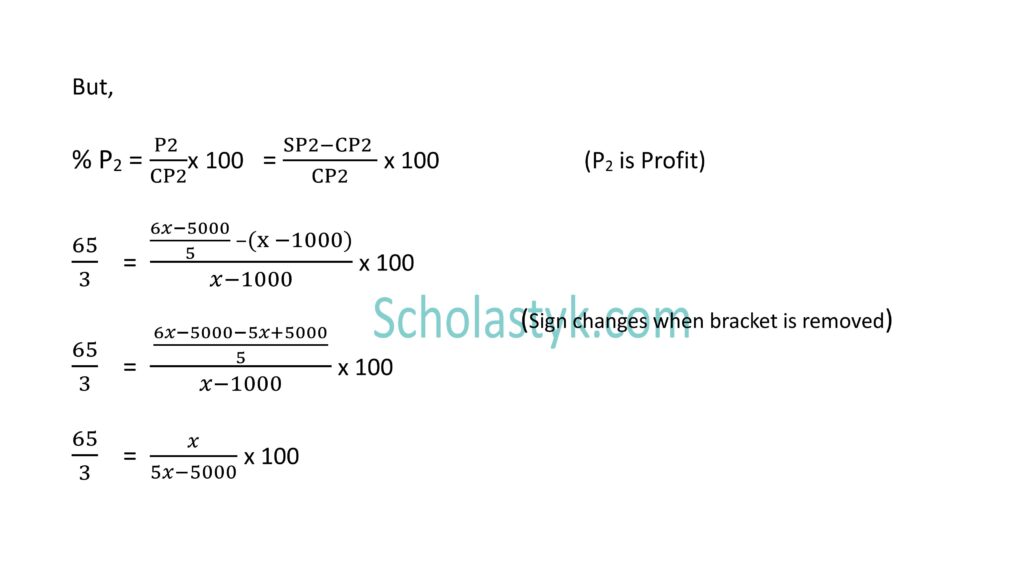
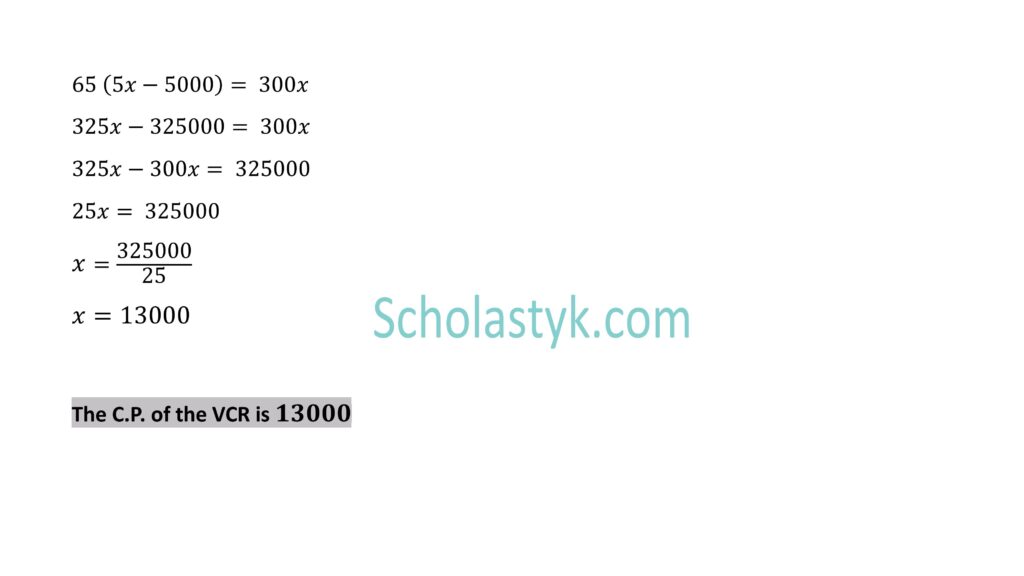
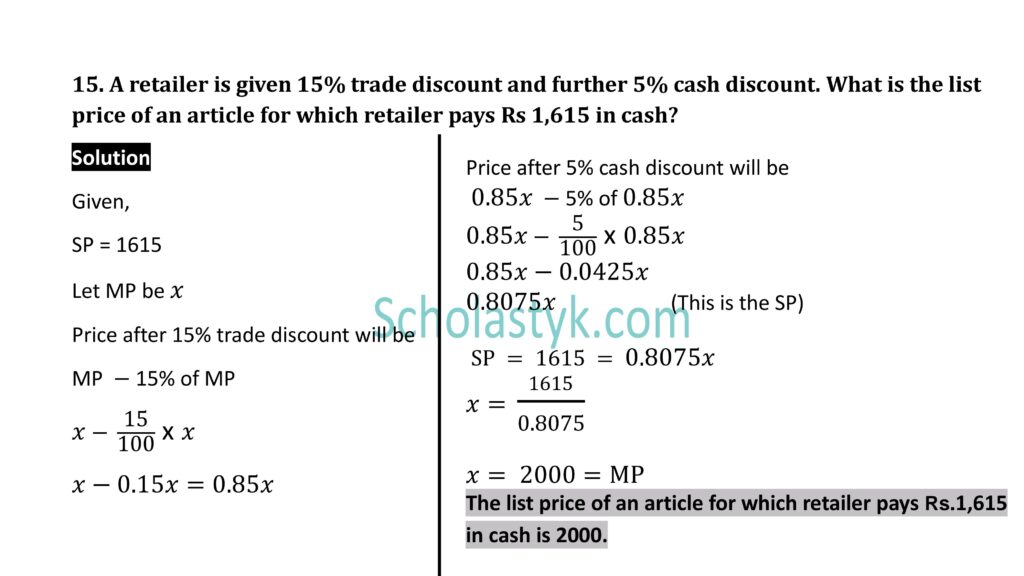
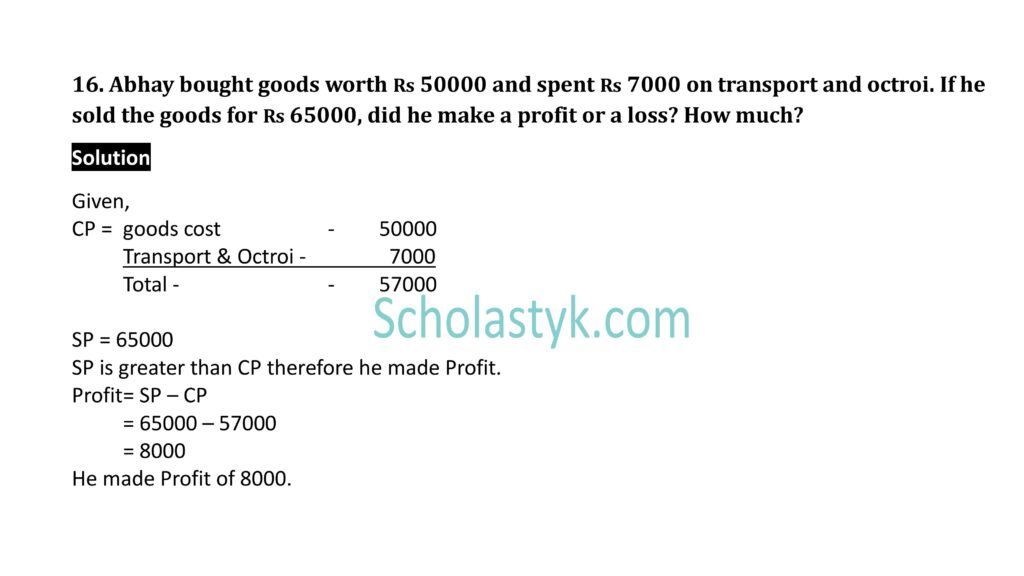
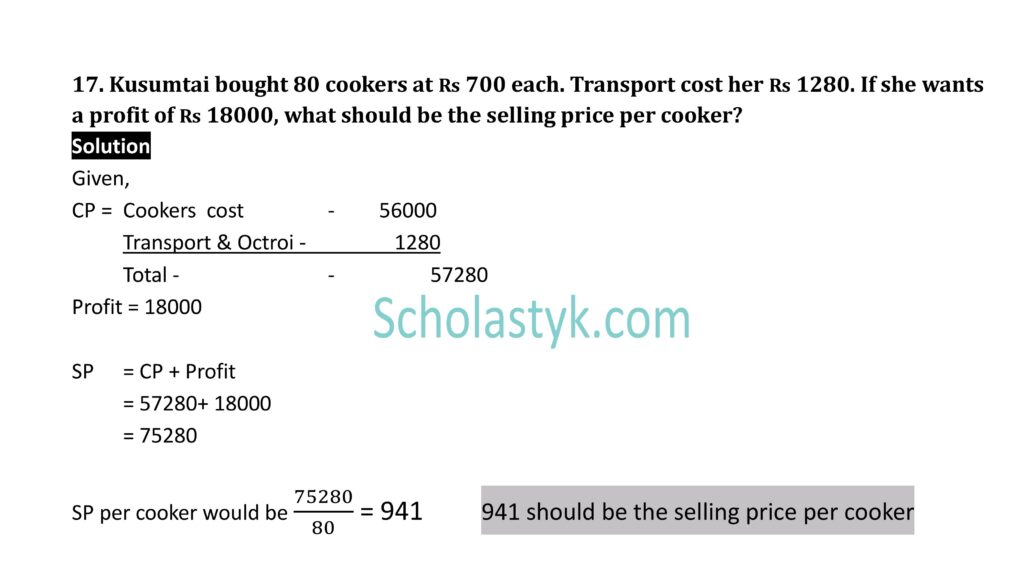
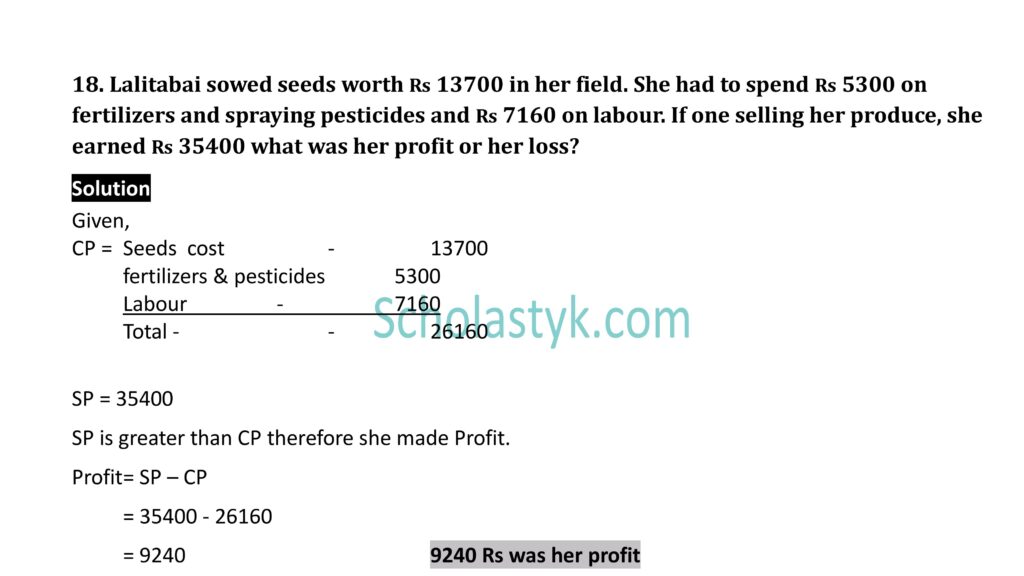
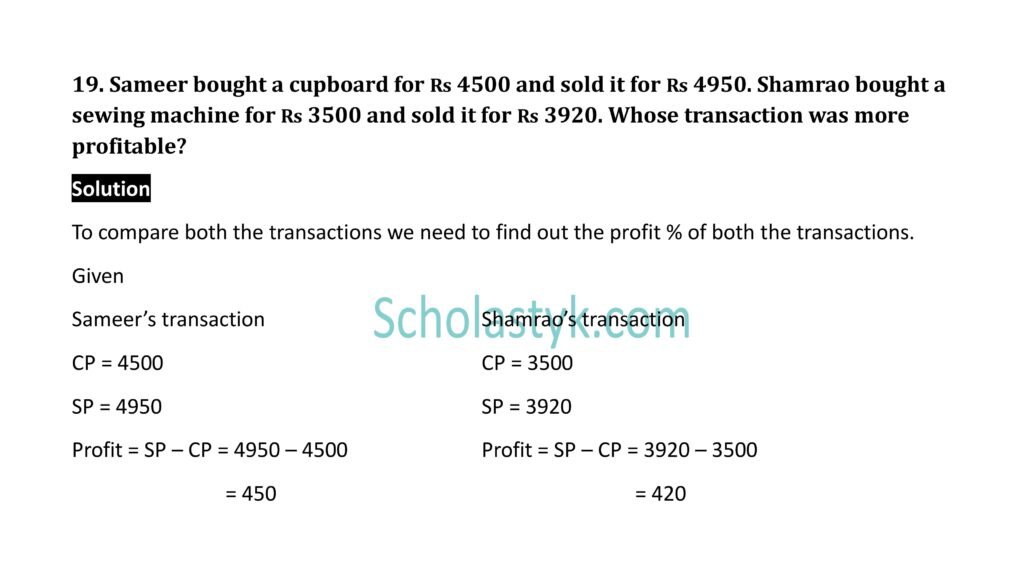
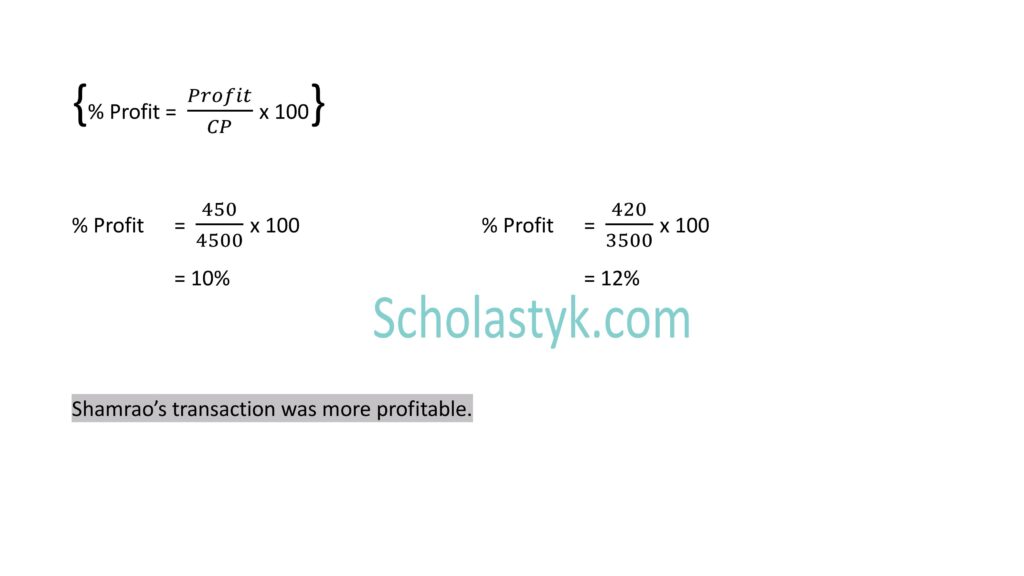
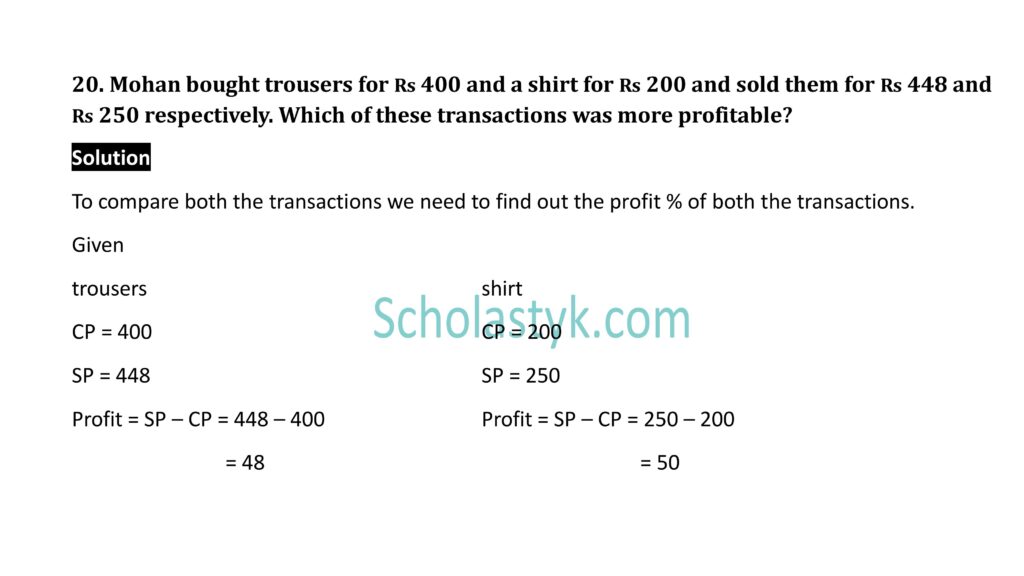
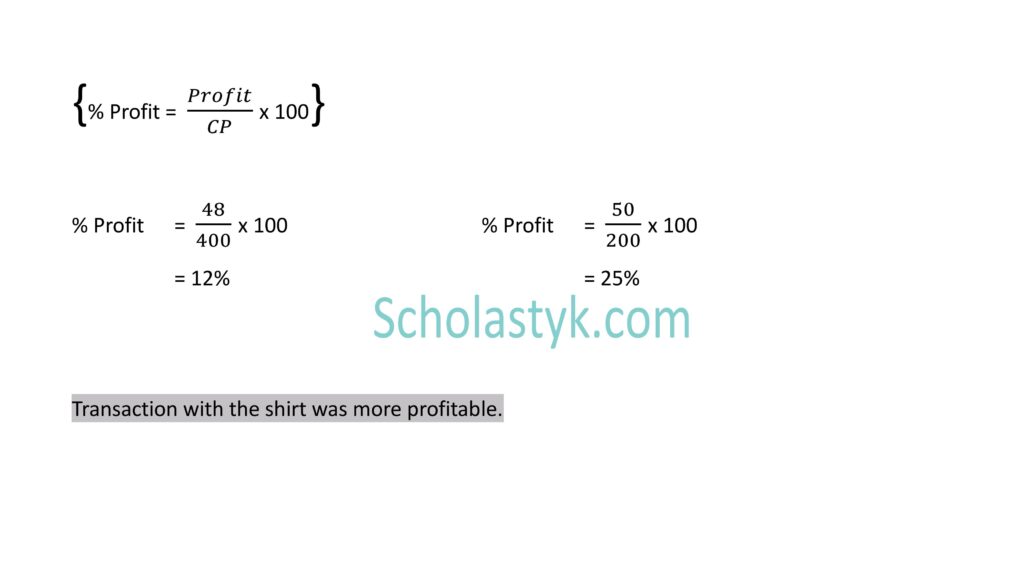
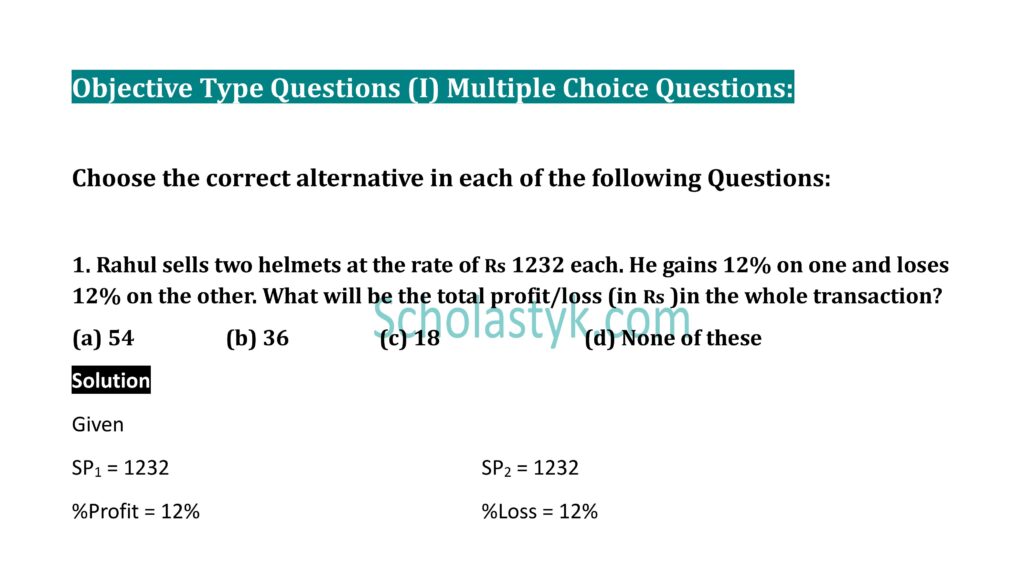
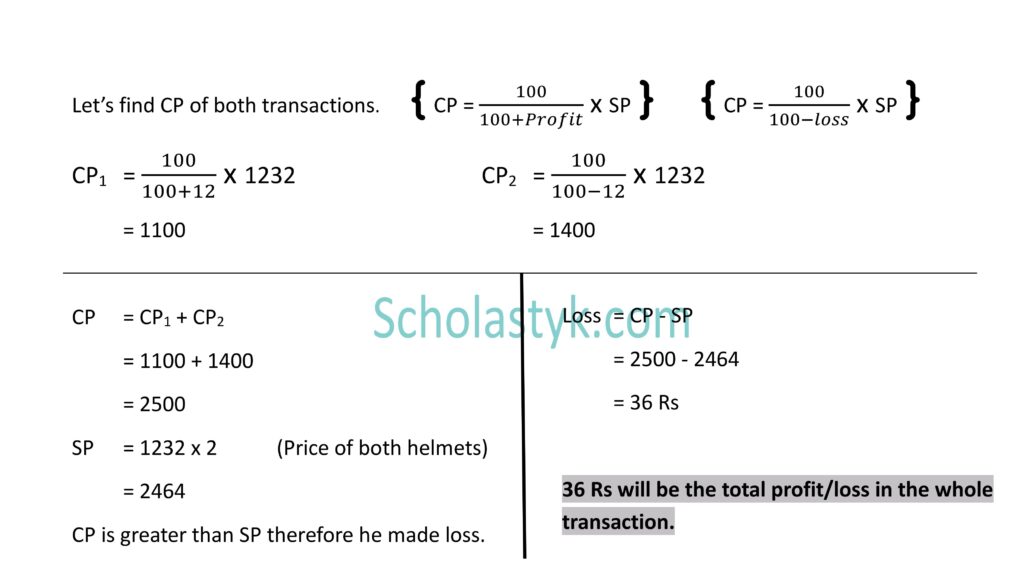
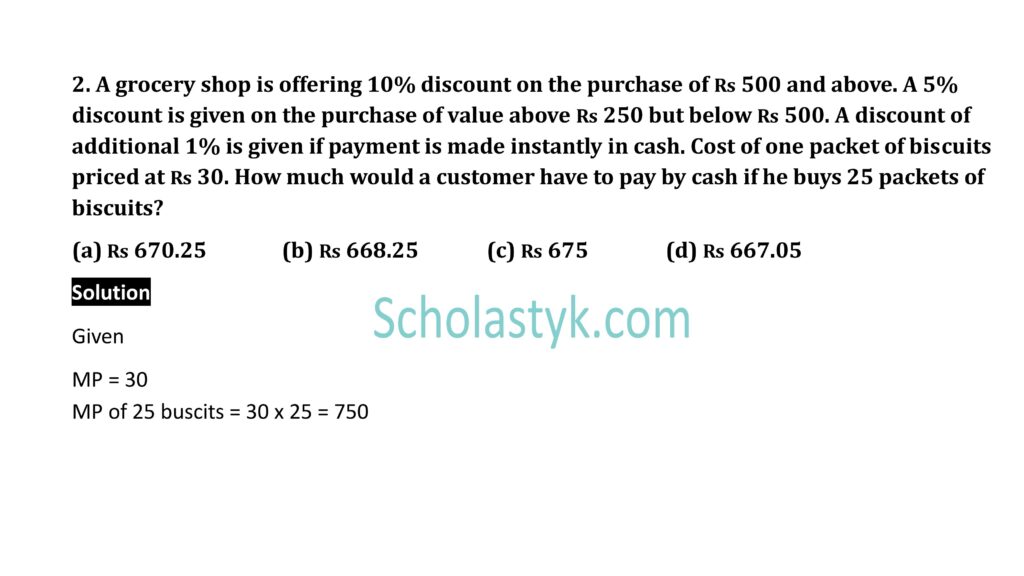
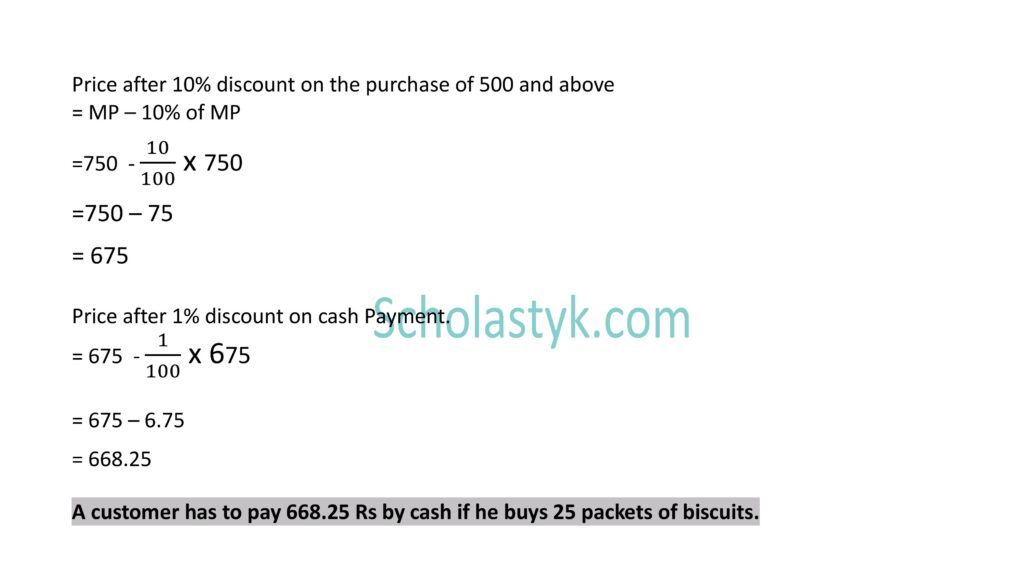
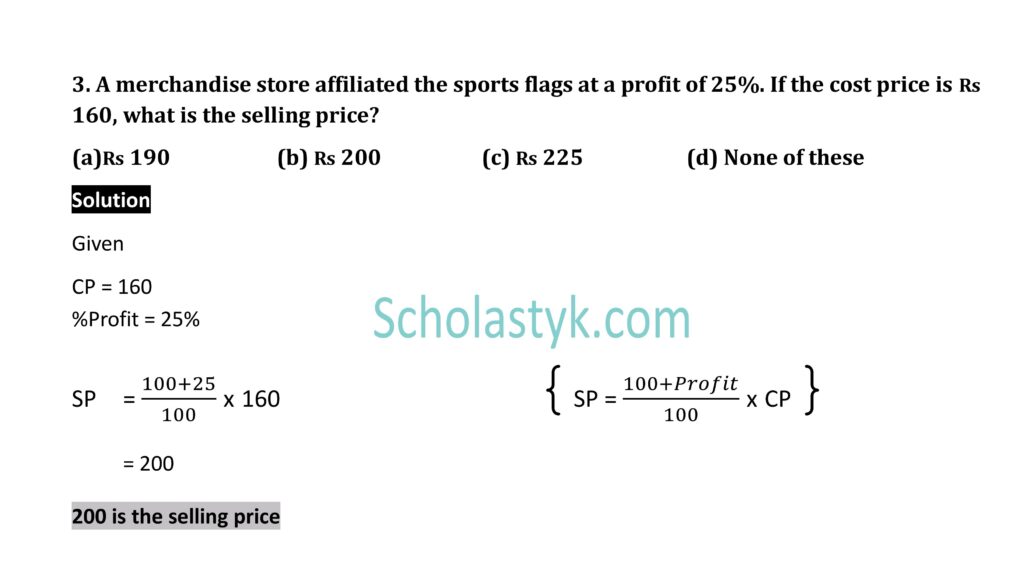
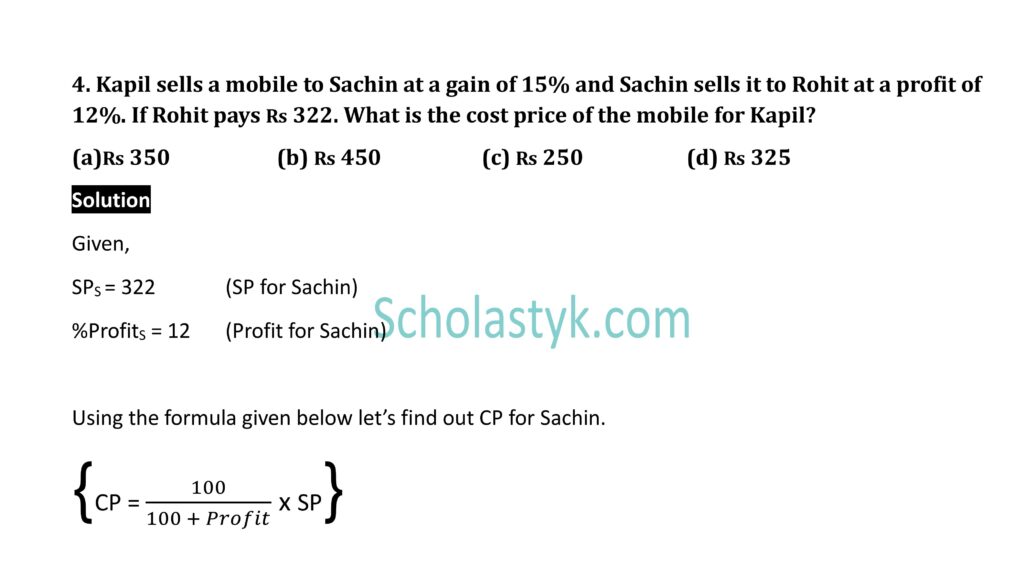
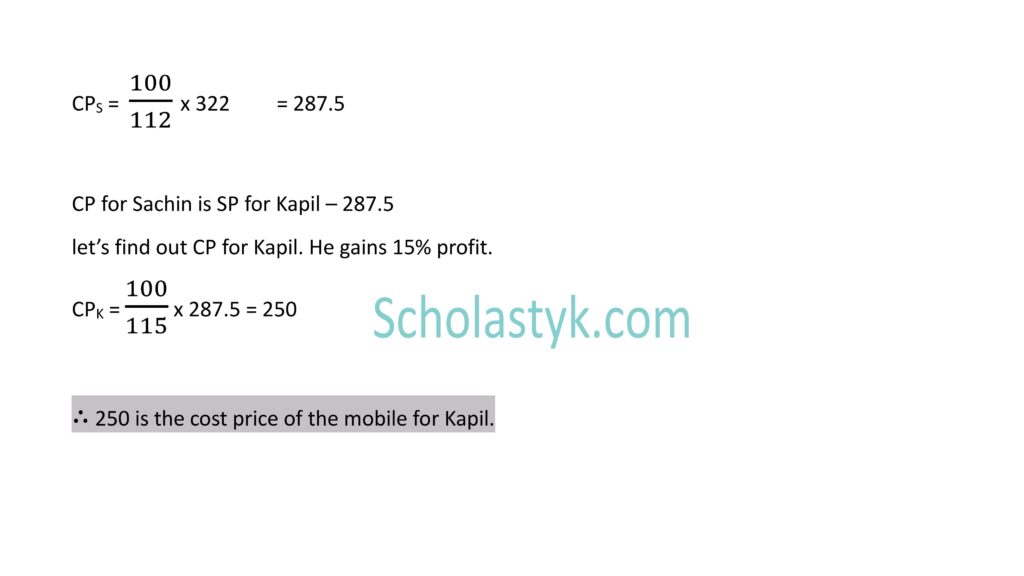
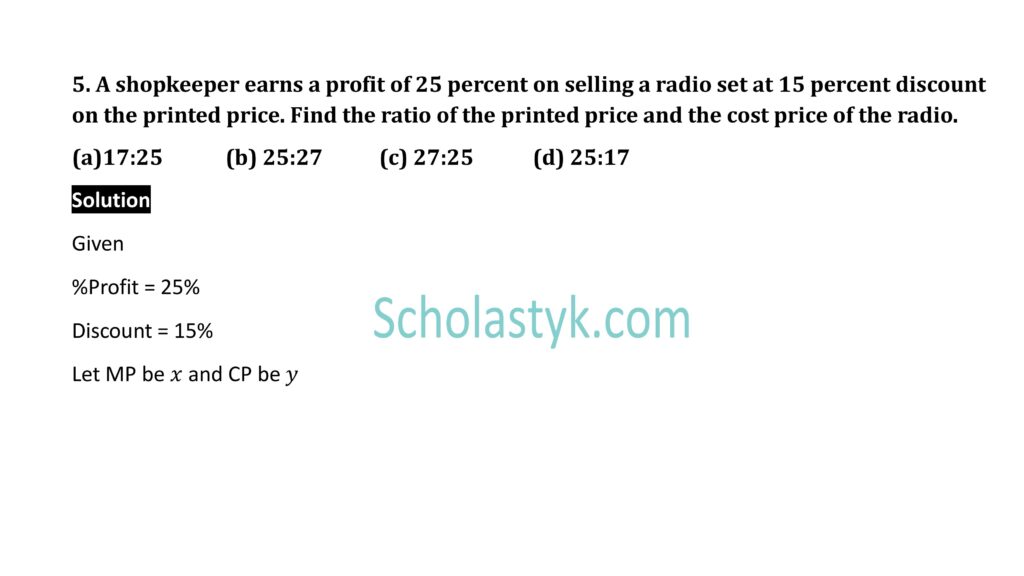
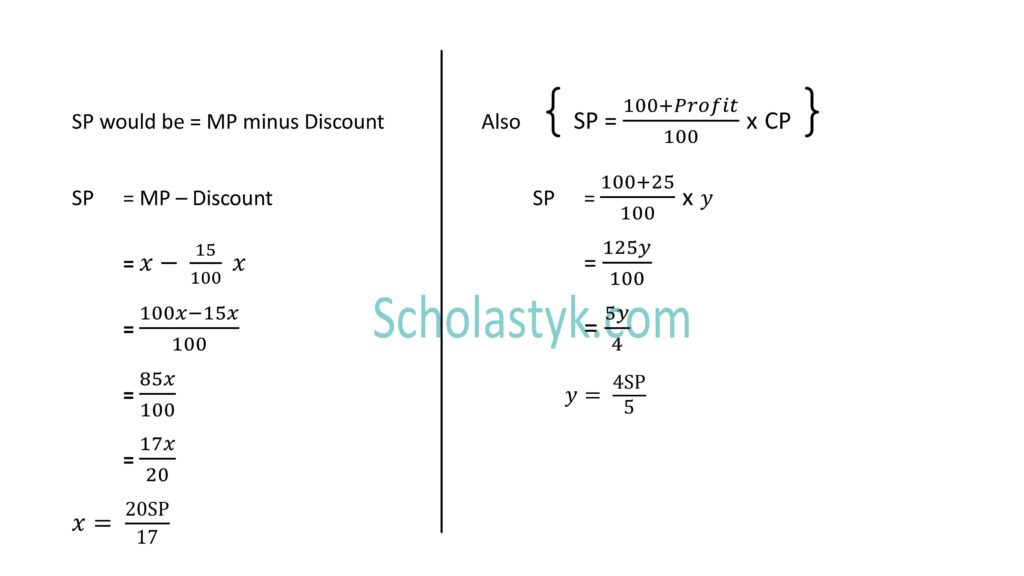
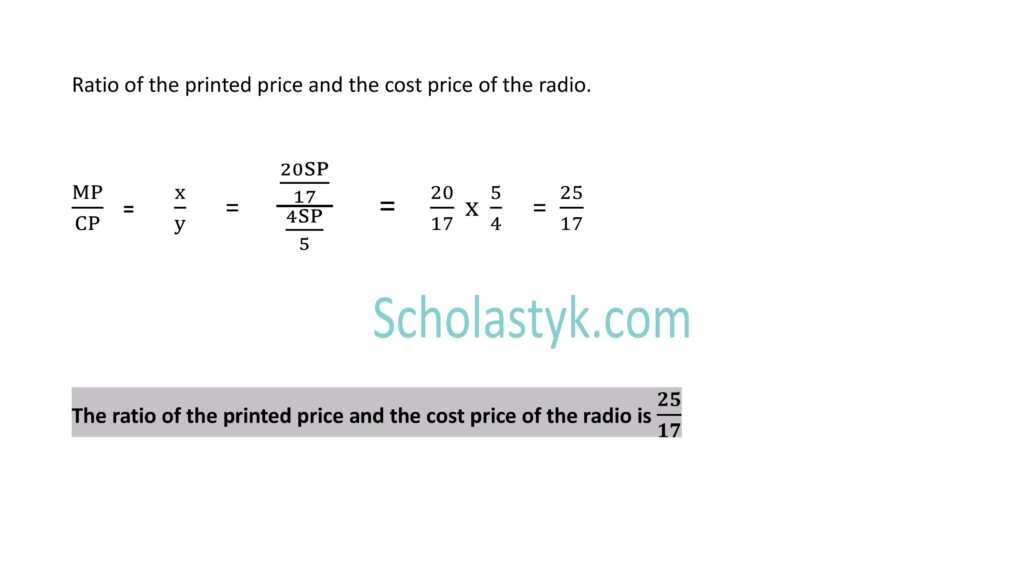
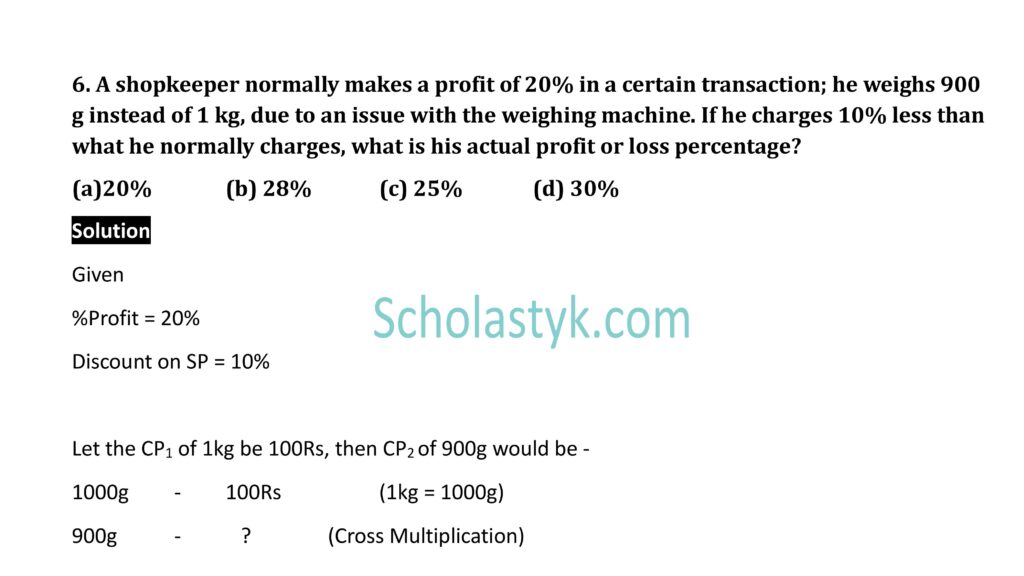
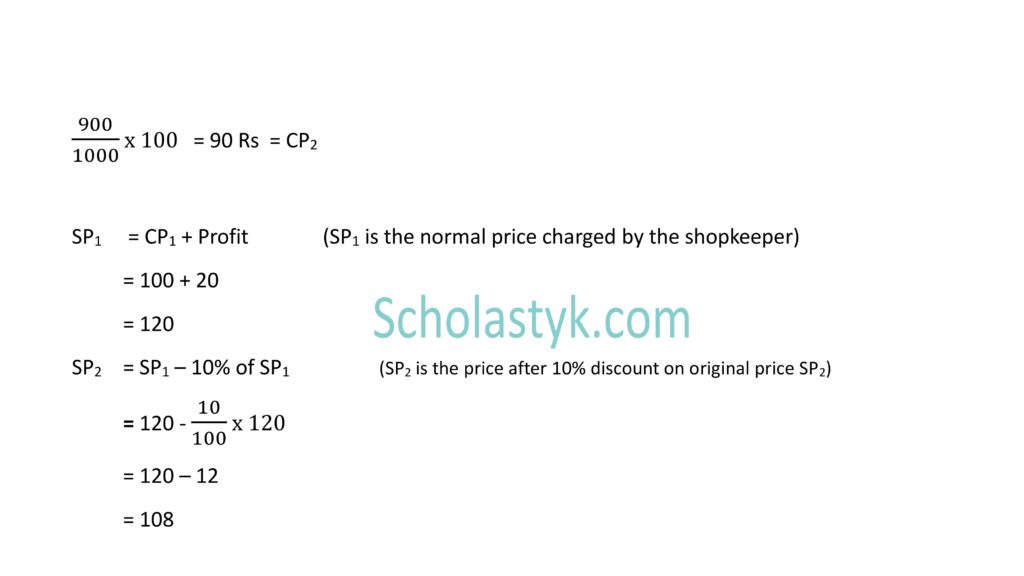
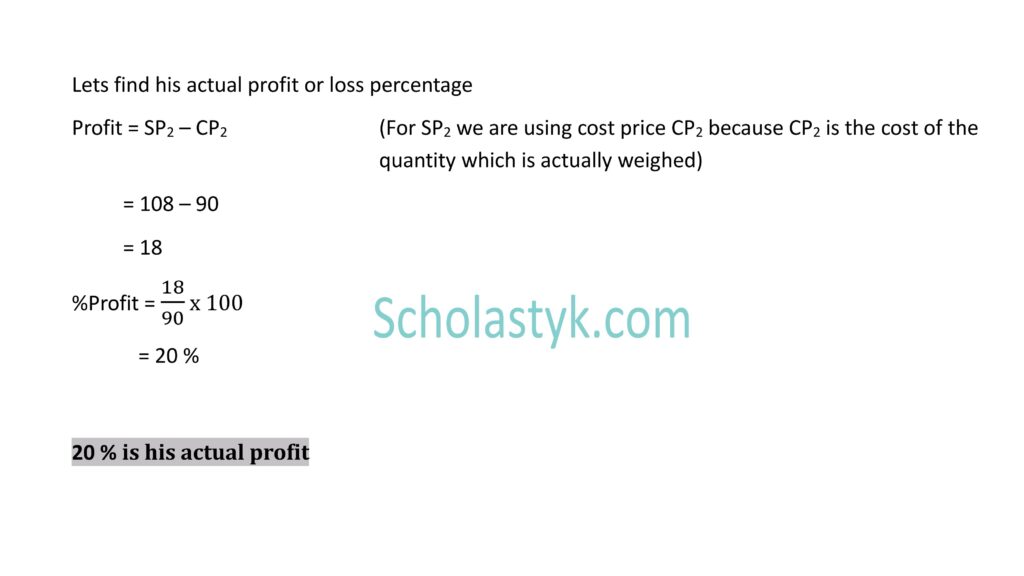
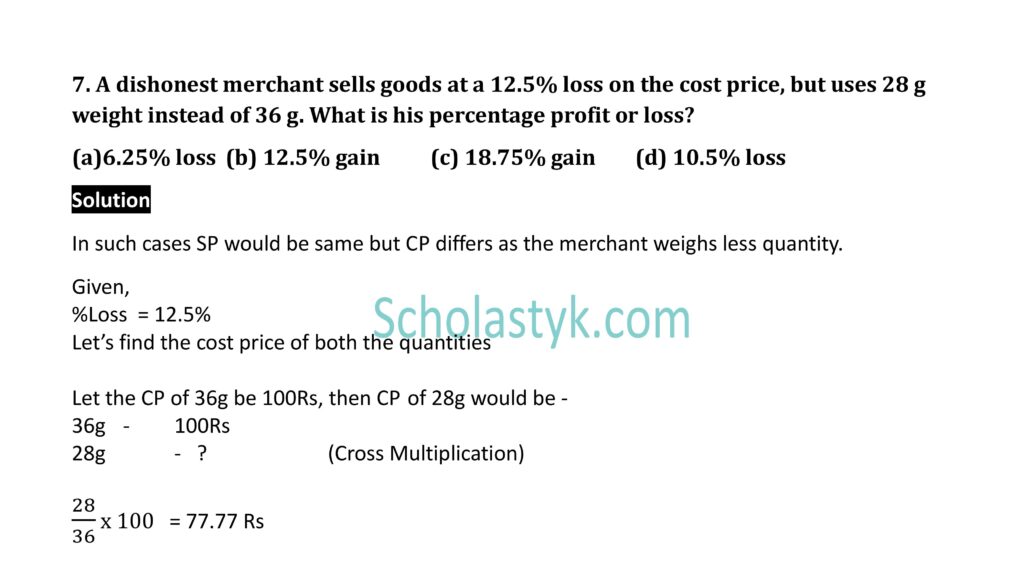
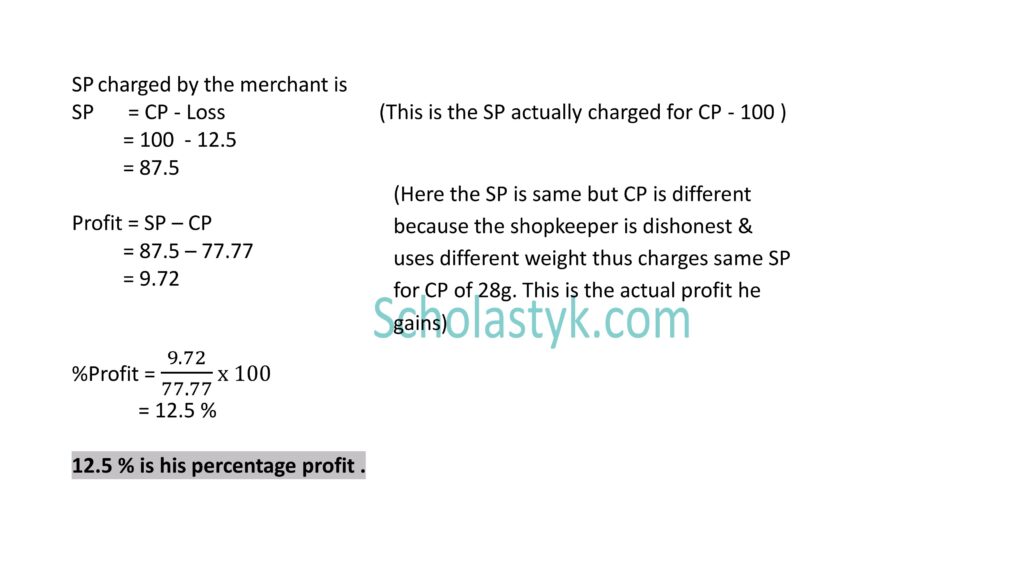
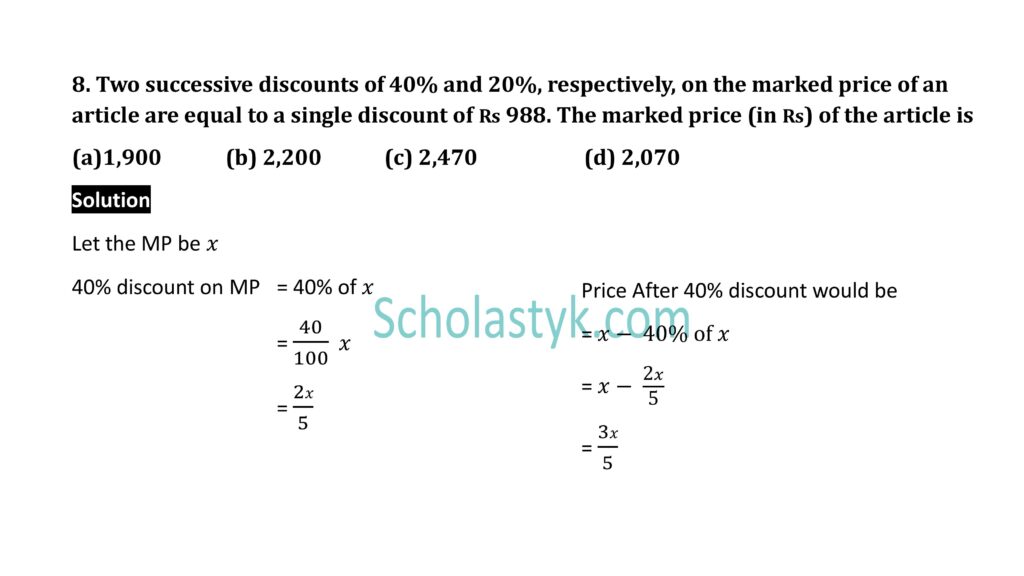
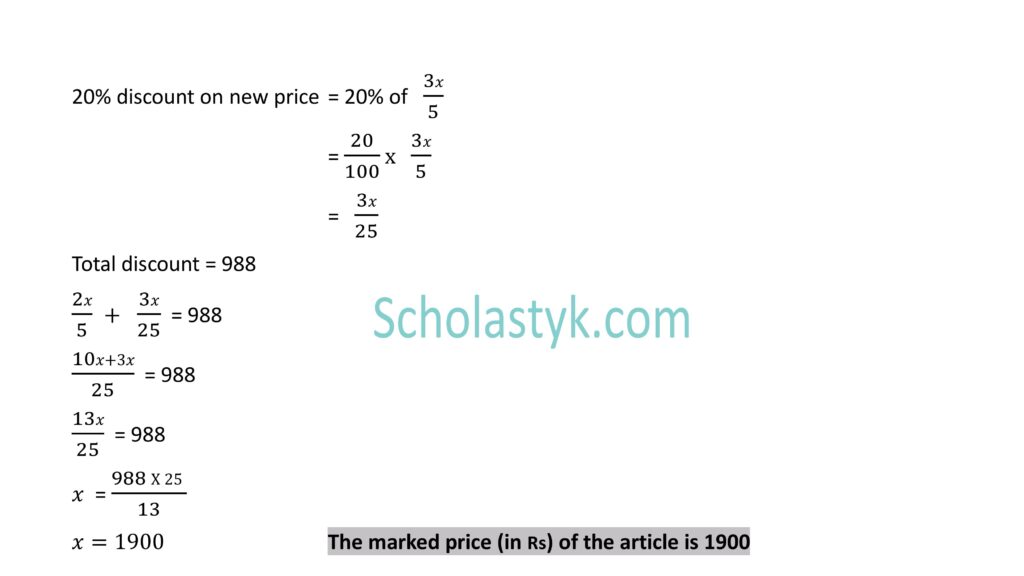
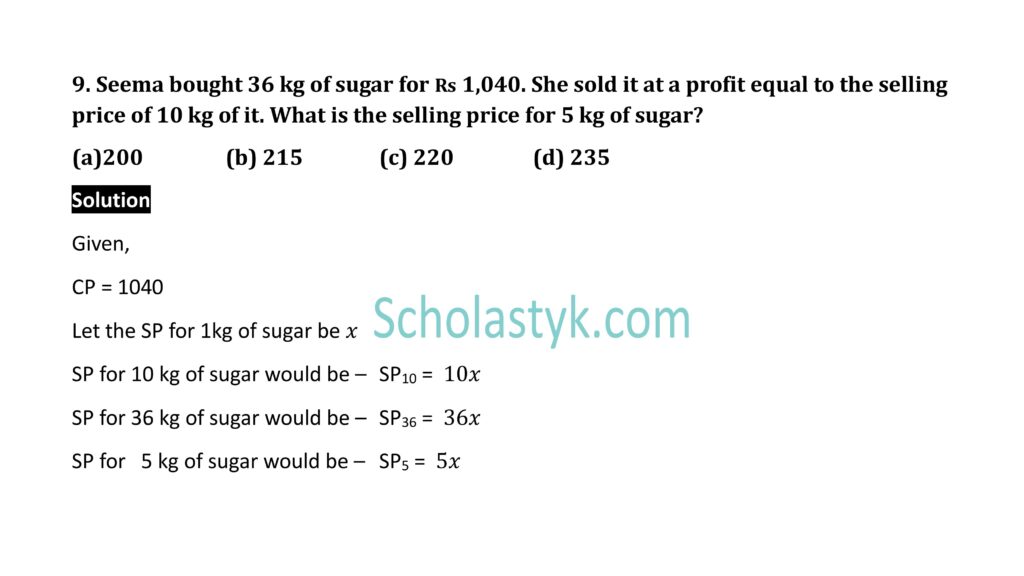
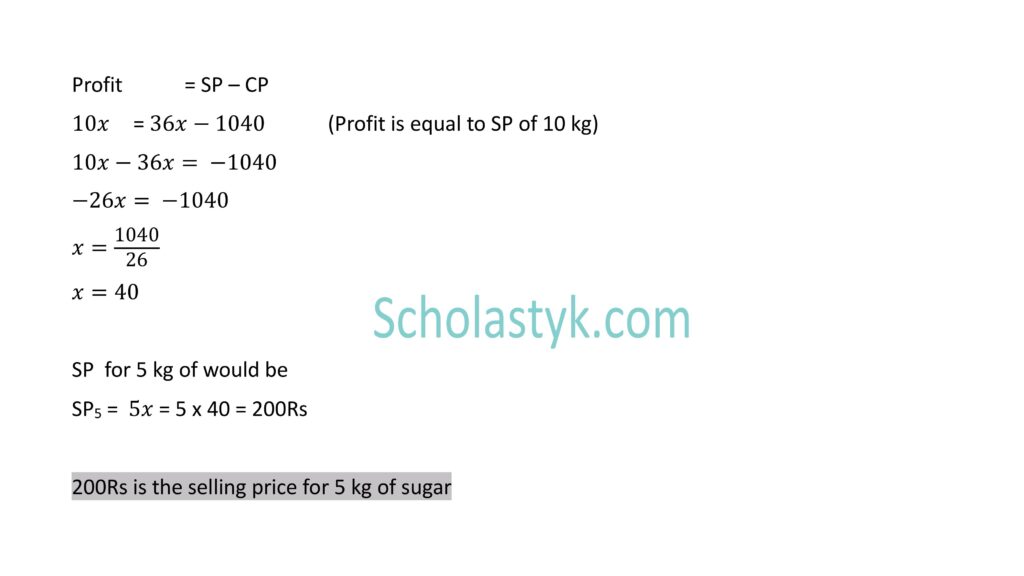
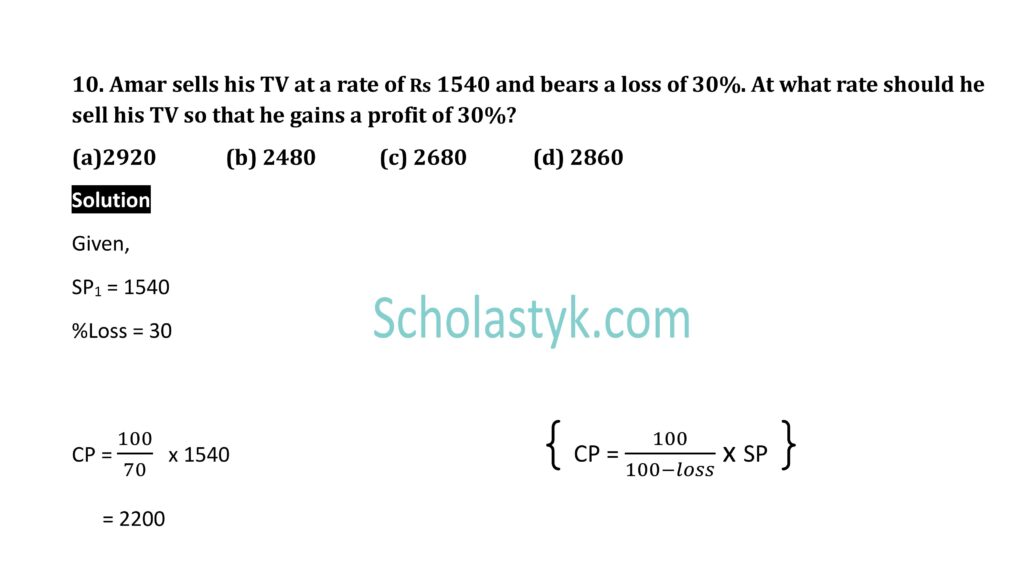
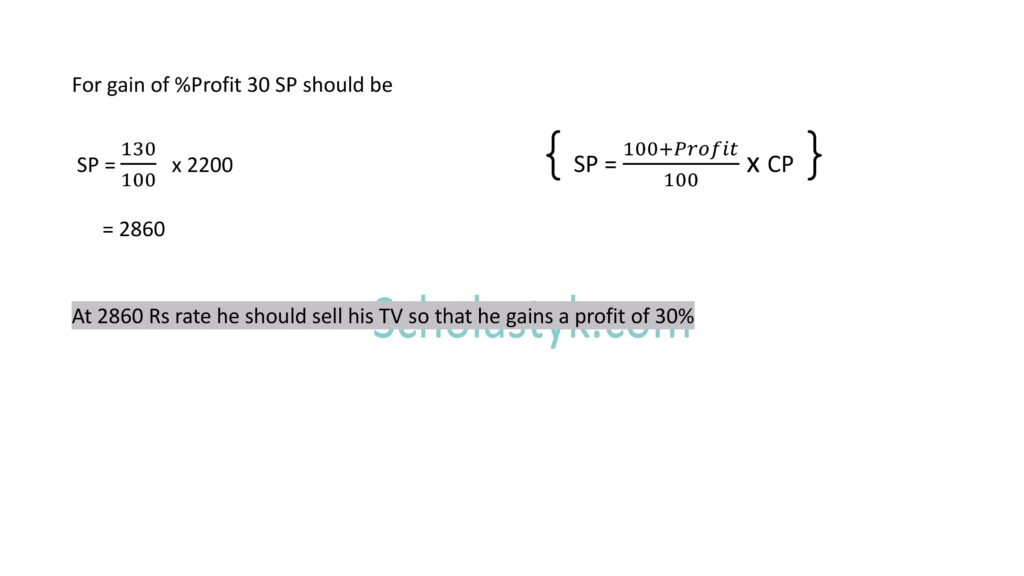
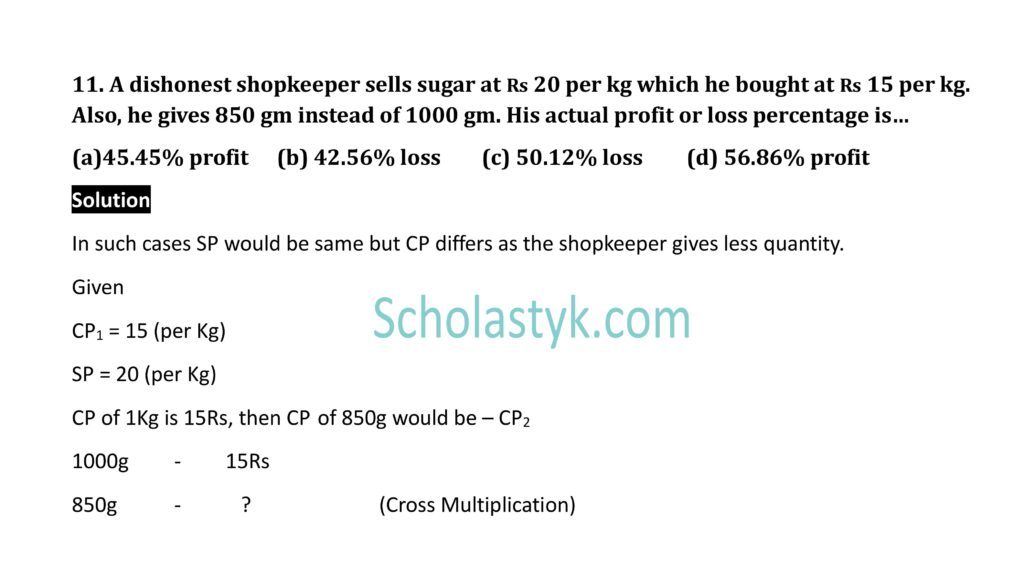
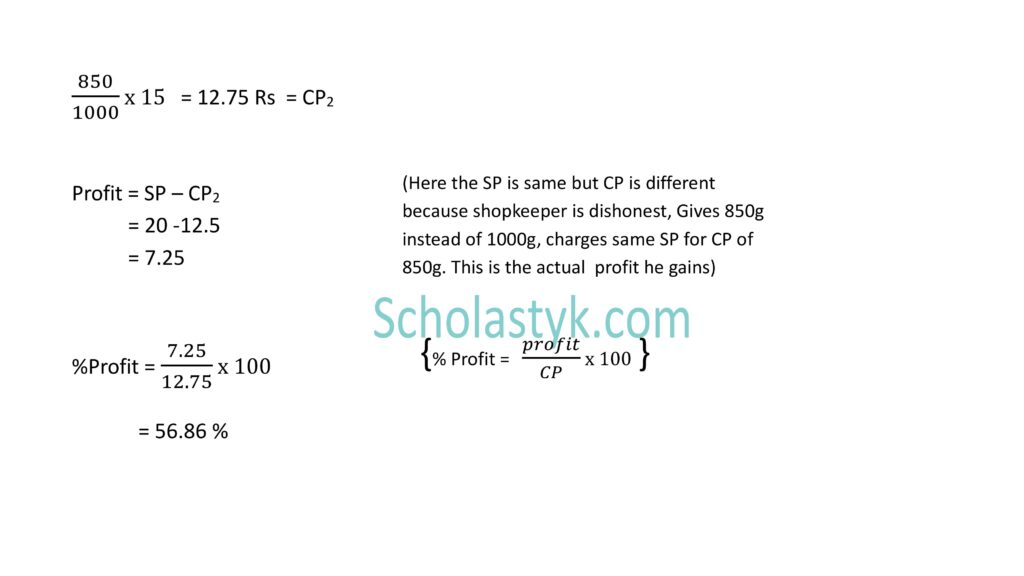
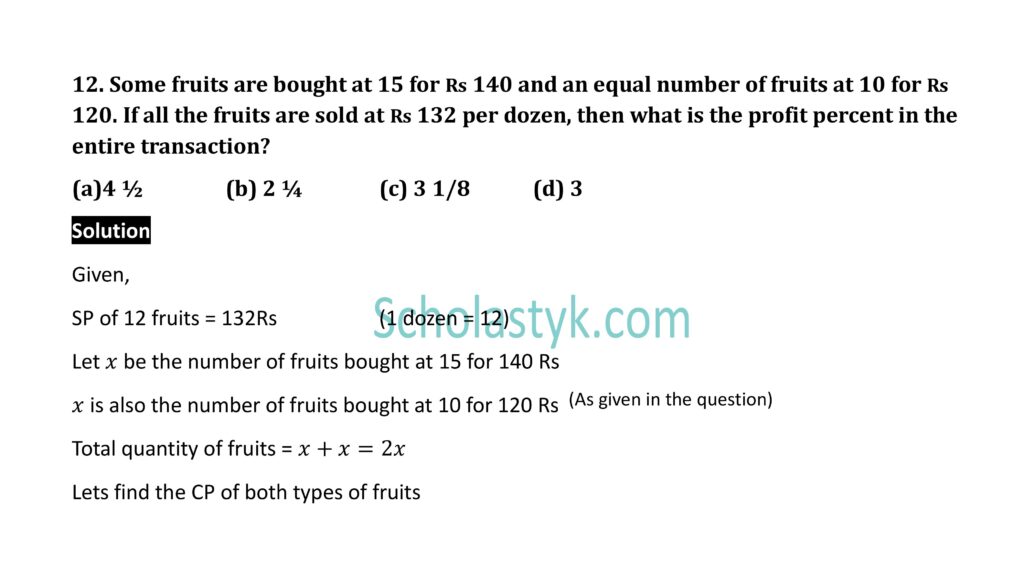
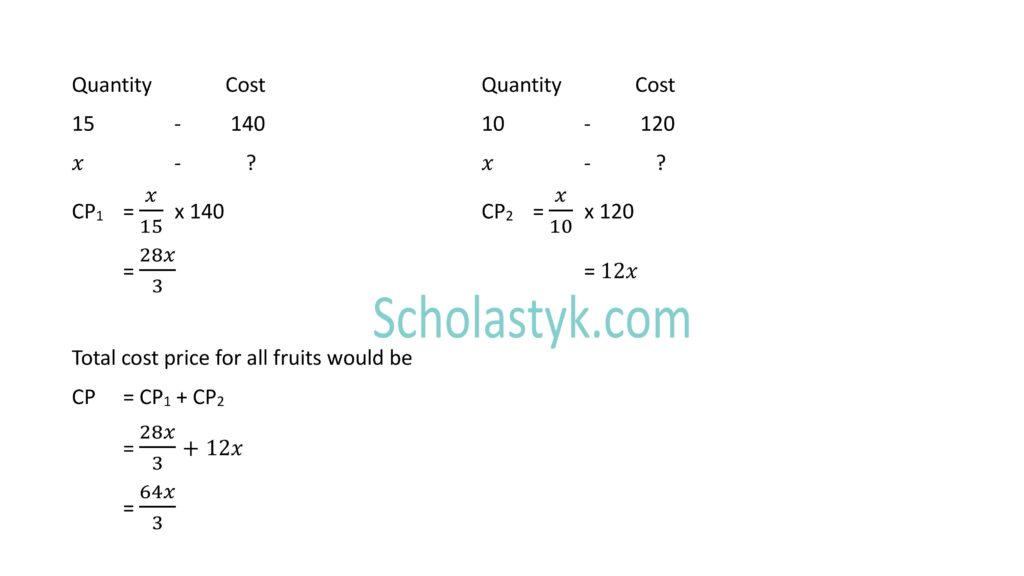
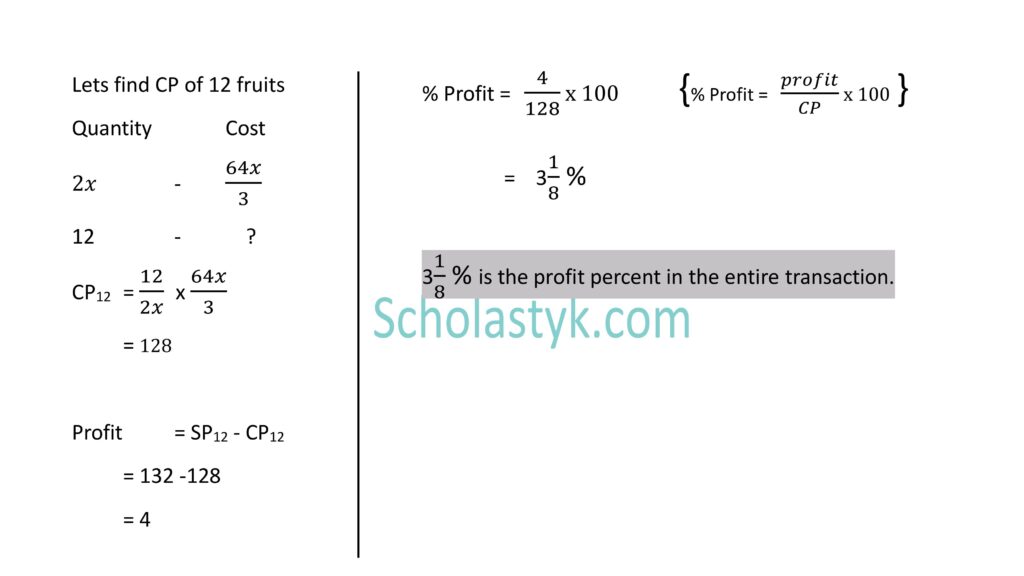
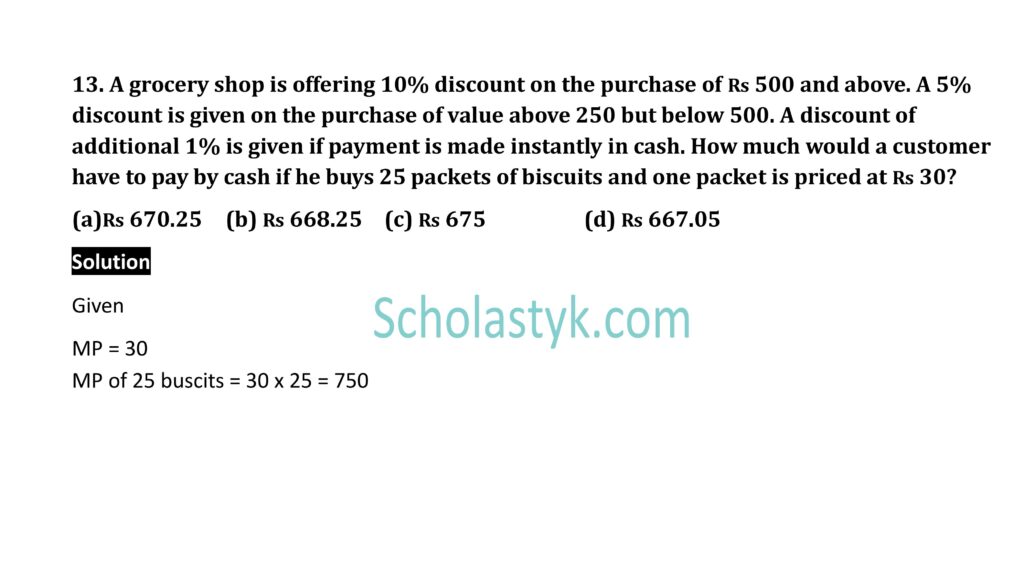
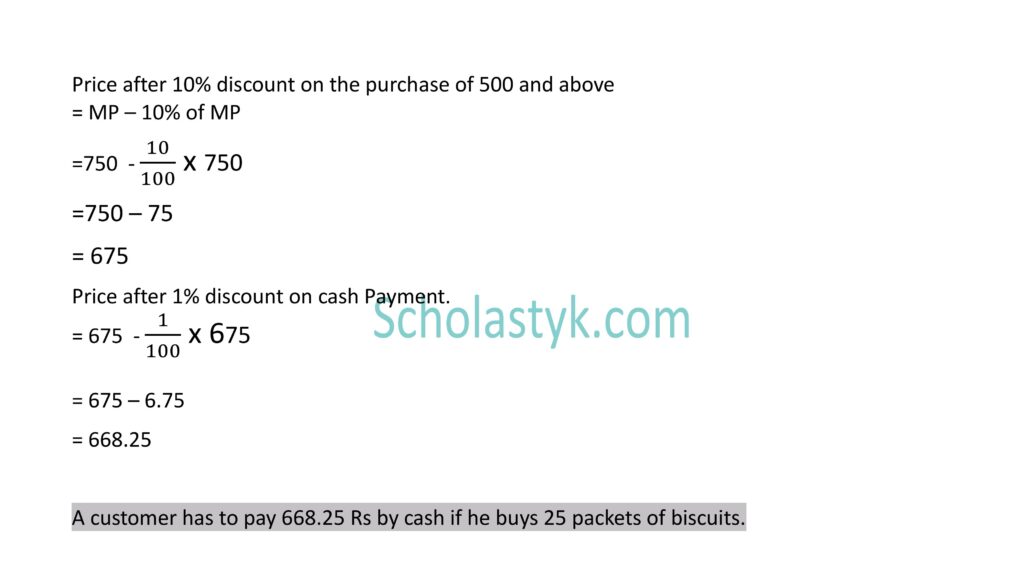
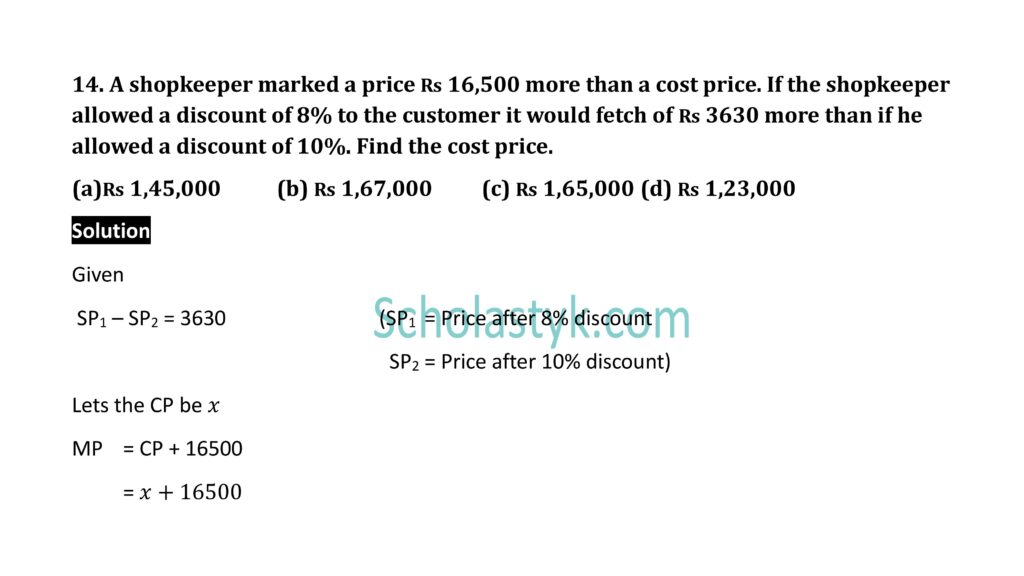
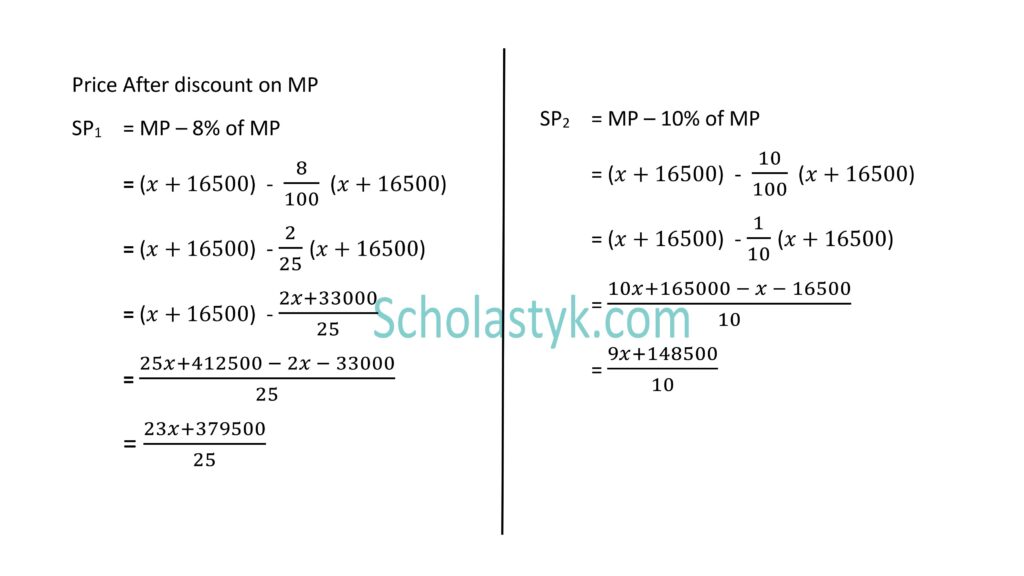
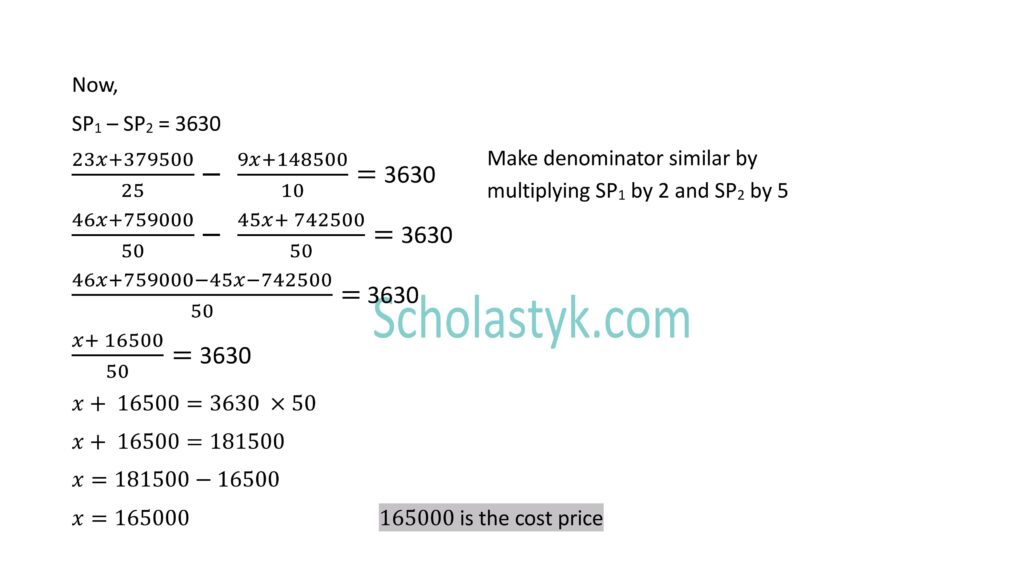
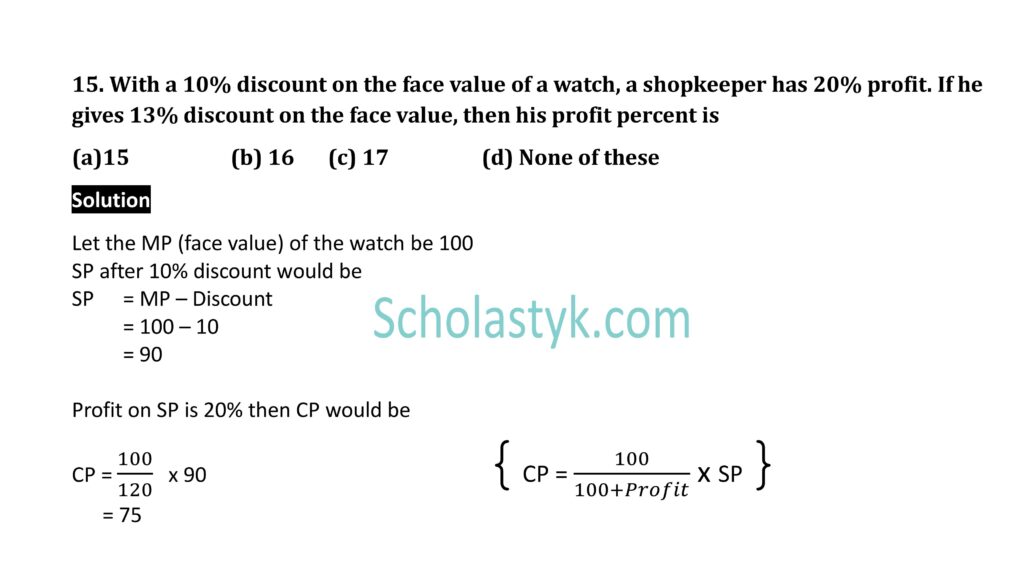
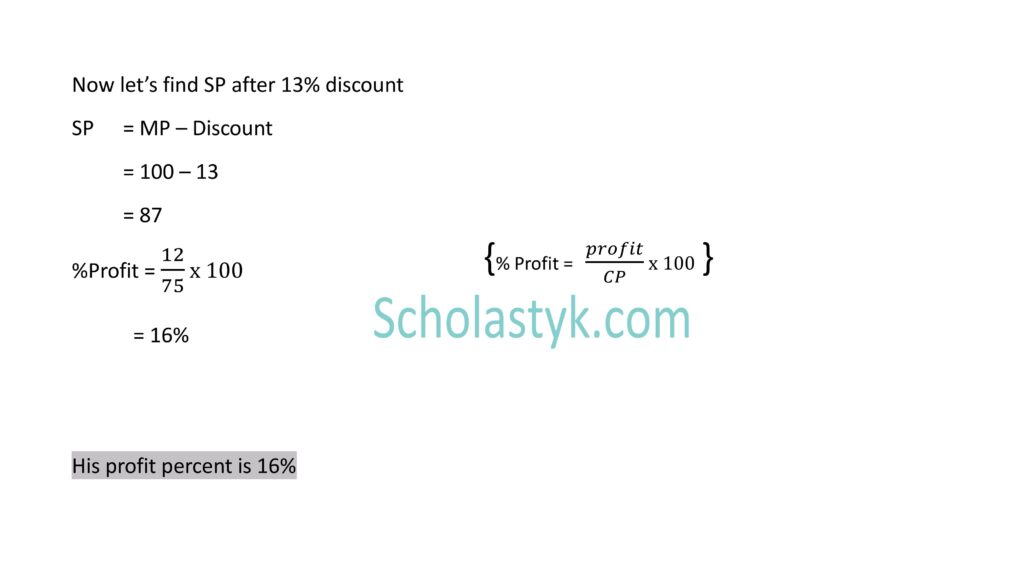

Exercise
(A) Theory Questions:
1. Define: (i) Cost price, (ii) Market price, (iii) Selling price.
2. What is cash discount and trade discount?
(B) Examples for Practice:
1. Fill in the blanks:
(i) The C.P. of an article should be ………… times S.P. if there is 25% profit.
(ii) The S.P. of an article is $\frac{6}{5}$ times the C.P. $\therefore$ The profit is ………… %.
(iii) An article when sold for ₹ 20, yields 25% profit. If it is sold for ₹ 24, the profit would be ………… %
(iv) A man sold 12 pens for the C.P. of 15 pens. $\therefore$ Profit is ………… %.
(v) A dealer sells 25 chairs for the cost price of 20 chairs. His percent loss is …………
(vi) If an article is marked 10% above C.P. and if 10% discount is given, there is…… (profit, loss, neither profit nor loss).
Questions
2. A piano is sold for ₹ 42,500 at a loss of 15%. For how much should it have been sold to earn a profit of 15%?
3. 60 litres of diesel is bought at ₹ 80 per litre. If 10% is lost in transit, at what rate should the remainder be sold to earn 10% on the whole?
4. A dealer bought a T.V. set and music system for ₹ 50,000. He sold T.V. set at a gain of 20% and music system at a loss of 10%. He gained 2% on the whole. Find the C.P. of T.V. set.
5. The cost of printing 2000 copies of a book is as follows:
Paper: ₹ 6,400
Printing: ₹ 4,000 per thousand copies
Binding: ₹ 280 per thousand copies.
If the publisher allows 15% discount to the bookseller and realizes a profit of 27 1/2 %, what is the S.P. of each copy?
6. A trader allows trade discount at 25% off the list price and further 5% for cash. How much an article costing ₹ 100, he should mark, so as to realise net profit of 14% on the cost?
7. 10 kg tea of quality ‘A’ costing ₹ 700 per kg and 20 kg tea of quality B at ₹ 650 per kg are mixed. What should be the rate of selling the mixture to earn a profit of 20%?
8. A manufacturer sells his article at 20% profit to the wholesaler. The wholesaler sells it to the retailer at 25% and the retailer sells it to the customer at 40% for ₹ 175. Find the C.P. to the manufacturer.
9. Material worth ₹ 5,000 was required for making 10 chairs. Labour charges were ₹ 2,500. What should be the S.P. of each chair to realise a profit of 33 1/3 %?
10. A, B, C are partners in a business with capitals ₹ 50,000, ₹ 40,000 and ₹ 30,000 respectively. C gets 20% of the profit for managing the business and rest is divided in the ratio of their capitals. At the end of the year, C gets ₹ 4,000 more than B. Find the profit and share of each.
11. A dealer purchased two machines for a total of ₹ 22,000. He sold one of them at a gain of 6% and the other at a loss of 5%, but then he finds that he has neither gained nor lost in the total transaction. Find C.P. of the machines.
12. An article when sold for ₹ 875 resulted in a loss of 30%. ₹150 were paid towards transport and octroi. What was the original C.P. of the article?
13. A merchant purchased rice worth ₹ 16,500. 1/3 of the rice was partly damaged and had to sold at 10% loss. Find the percentage of profit at which he should sell the remaining stock so that he may make 20% on the whole.
14. A VCR is sold at a profit of 20%. If the C.P. and S.P. would each be less by ₹ 1,000, there would be an increase in profit by 5/3 %. Find the C.P. of the VCR.
15. A retailer is given 15% trade discount and further 5% cash discount. What is the list price of an article for which retailer pays ₹ 1,615 in cash ?
16. Abhay bought goods worth ₹ 50000 and spent ₹ 7000 on transport and octroi. If he sold the goods for ₹ 65000, did he make a profit or a loss? How much?
17. Kusumtai bought 80 cookers at ₹ 700 each. Transport cost her ₹ 1280. If she wants a profit of ₹ 18000, what should be the selling price per cooker?
18. Lalitabai sowed seeds worth ₹ 13700 in her field. She had to spend ₹ 5300 on fertilizers and spraying pesticides and ₹ 7160 on labour. If one selling her produce, she earned ₹ 35400 what was her profit or her loss?
19. Sameer bought a cupboard for ₹ 4500 and sold it for ₹ 4950. Shamrao bought a sewing machine for ₹ 3500 and sold it for ₹ 3920. Whose transaction was more profitable?
20. Mohan bought trousers for ₹400 and a shirts for ₹200 and sold them for ₹448 and ₹250 respectively. Which of these transactions was more profitable?
Answers
(B) (1) (i) 4/5 (ii) 20 (iii) 50 (iv) 25 (v) 20 (vi) loss. (2) ₹ 57,500 (3) ₹97.78 (approx.) (4) ₹20,000 (5) ₹15 (6) ₹160 (7) ₹800 per kg (8) ₹83.33 (9) ₹1,000 (10) ₹30,000, ₹10,000, ₹8,000, ₹12,000 (11) ₹12,000, ₹10,000 (12) ₹ 1,100 (13) 35% (14) ₹13,000 (15) ₹2,000 (16) Profit, ₹8000 (17) ₹941 (18) Profit, ₹9240 (19) 25% profit (20) Transaction with the shirt was more profitable.
Objective Type Questions
(I) Multiple Choice Questions:
Choose the correct alternative in each of the following Questions:
1. Rahul sells two helmets at the rate of ₹1232 each. He gains 12% on one and loses 12% on the other. What will be the total profit/loss (in ₹) in the whole transaction?
(a) 54 (b) 36 (c) 18 (d) None of these
2. A grocery shop is offering 10% discount on the purchase of ₹ 500 and above. A 5% discount is given on the purchase of value above ₹250 but below ₹500. A discount of additional 1% is given if payment is made instantly in cash. Cost of one packet of biscuits priced at ₹ 30. How much would a customer have to pay by cash if he buys 25 packets of biscuits?
(a) 670.25 (b) 668.25 (c) 675 (d) 667.05.
3. A merchandise store affiliated the sports flags at a profit of 25%. If the cost price is 160, what is the selling price?
(a) 190 (c) 225 (b) ₹200 (d) None of these
4. Kapil sells a mobile to Sachin at a gain of 15% and Sachin again sells it to Rohit at a profit of 12%. If Rohit pays ₹322. What is the cost price of the mobile for Kapil?
(a) ₹350 (b) ₹450 (c) ₹250 (d) 325
5. A shopkeeper earns a profit of 25 percent on selling a radio set at 15 percent discount on the printed price. Finds the ratio of the printed price and the cost price of the radio.
(a) 17:25 (b) 25:27 (c) 27:25 (d) 25:17
6. A shopkeeper normally makes a profit of 20% in a certain transaction; he weighs 900 g instead of 1 kg, due to an issue with the weighing machine. If he charges 10% less than what he normally charges, what is his actual profit or loss percentage?
(a) 20% (b) 28% (c) 25% (d) 30%
7. A dishonest merchant sells goods at a 12.5% loss on the cost price, but uses 28 g weight instead of 36 g. What is his percentage profit or loss?
(a) 6.25% loss (b) 12.5% gain (c) 18.75% gain (d) 10.5% loss
8. Two successive discounts of 40% and 20%, respectively, on the marked price of an article are equal to single discount of ₹988. The marked price (in) of the article is ……..
(a) 1,900 (b) 2,200 (c) 2,470 (d) 2,070
9. Seema bought 36 kg of sugar for ₹1,040. She sold it at a profit equal to the selling price of 10 kg of it. What is the selling price (in) for 5 kg of sugar?
(a) 200 (b) 215 (c) 220 (d) 235
10. Amar sells his TV at a rate of ₹1540 and bears a loss of 30%. At what rate should he sell his TV so that he gains a profit of 30%?
(a) 2920 (b) 2480 (c) 2680 (d) 2860
11. A dishonest shopkeeper sells sugar at ₹ 20 per kg which he bought at ₹ 15 per kg. Also, he gives 850 gm instead of 1000 gm. His actual profit or loss percentage is
(a) 45.45% profit (c) 50.12% loss (b) 42.56% loss (d) 56.86% profit
12. Some fruits are bought at 15 for ₹ 140 and an equal number of fruits at 10 for ₹ 120. If all the fruits are sold at ₹ 132 per dozen, then what is the profit percent in the entire transaction?
(a) 4 1/2 (b) 2 1/4 (c) 3 1/8 (d) 3
13. A grocery shop is offering 10% discount on the purchase of ₹ 500 and above. A 5% discount is given on the purchase of value above ₹ 250 but below ₹ 500. A discount of additional 1% is given if payment is made instantly in cash. How much would a customer have to pay by cash if he buys 25 packets of biscuits and one packets is priced at ₹ 30?
(a) ₹ 670.25 (b) ₹ 668.25 (c) ₹ 675 (d) ₹ 667.05
14. A shopkeeper marked a price ₹ 16,500 more than a cost price. If the shopkeeper allowed a discount of 8% to the customer it would fetch of ₹ 3630 more than if he allowed a discount of 10%. Find the cost price.
(a) ₹ 1,45,000 (b) ₹ 1,67,000 (c) ₹ 1,65,000 (d) ₹ 1,23,000
15. With a 10% discount on the face value of a watch, a shopkeeper has 20% profit. If he gives 13% discount on the face value, then his profit percent is ……
(a) 15 (c) 17 (b) 16 (d) None of these
Answers
1. (b) 2. (b) 3. (b) 4. (c) 5. (d) 6. (a) 7. (b) 8. (a) 9. (a) 10. (d) 11. (d) 12. (c) 13. (b) 14. (c) 15. (b)
Also read –
